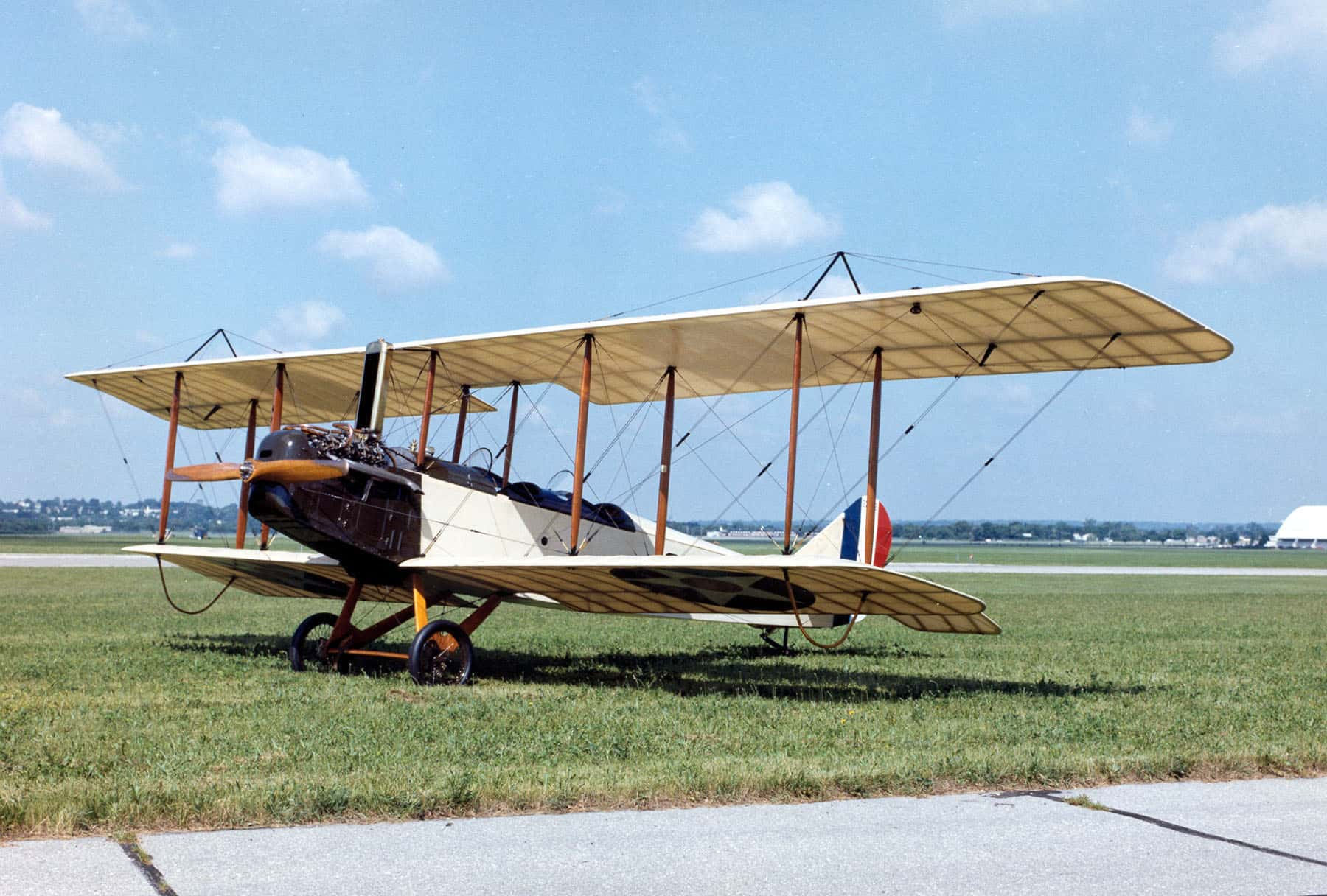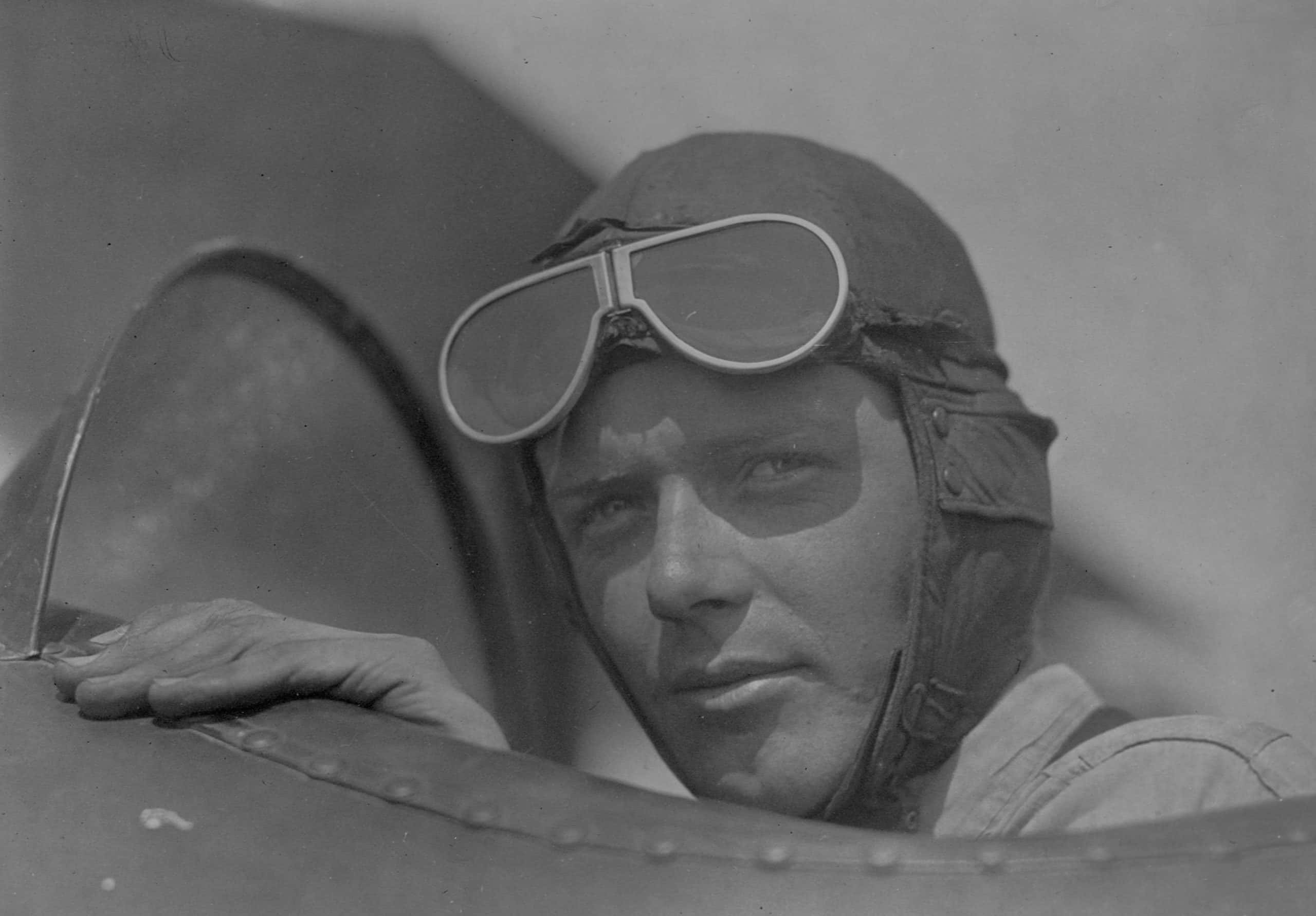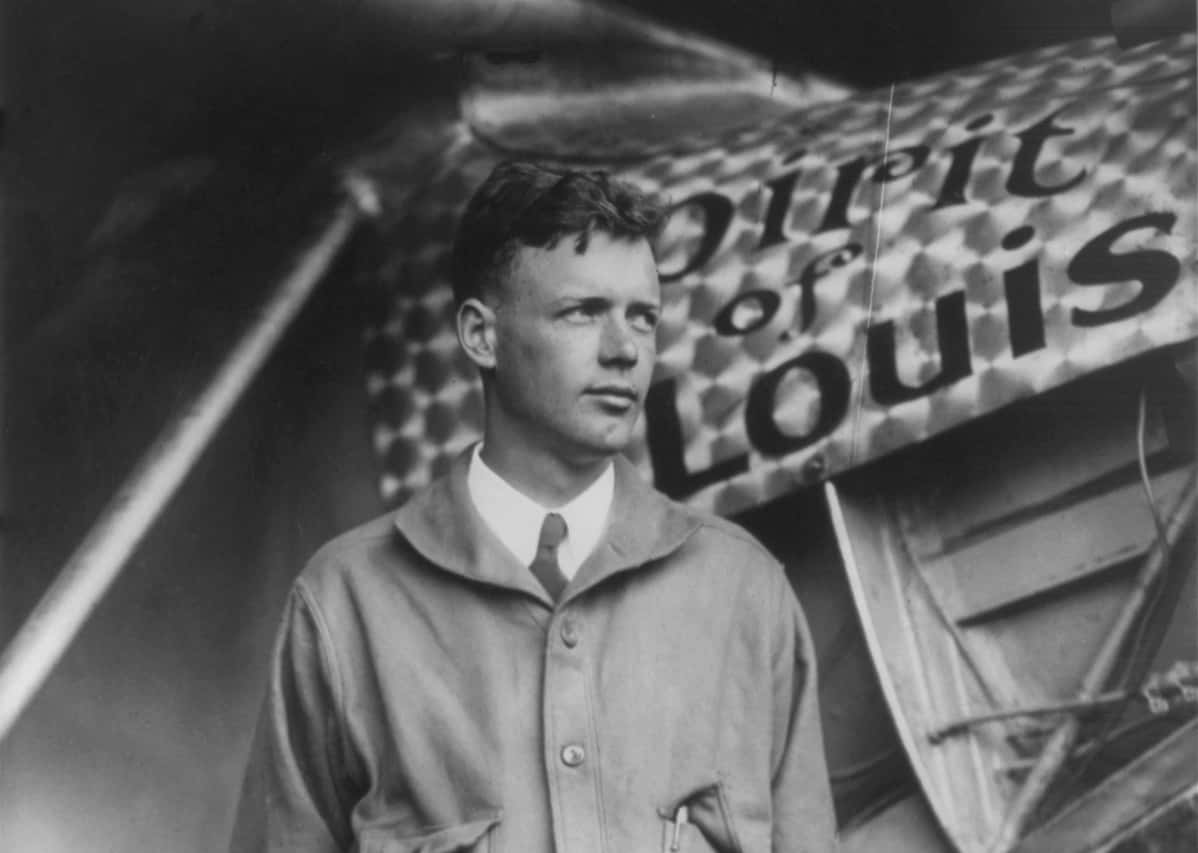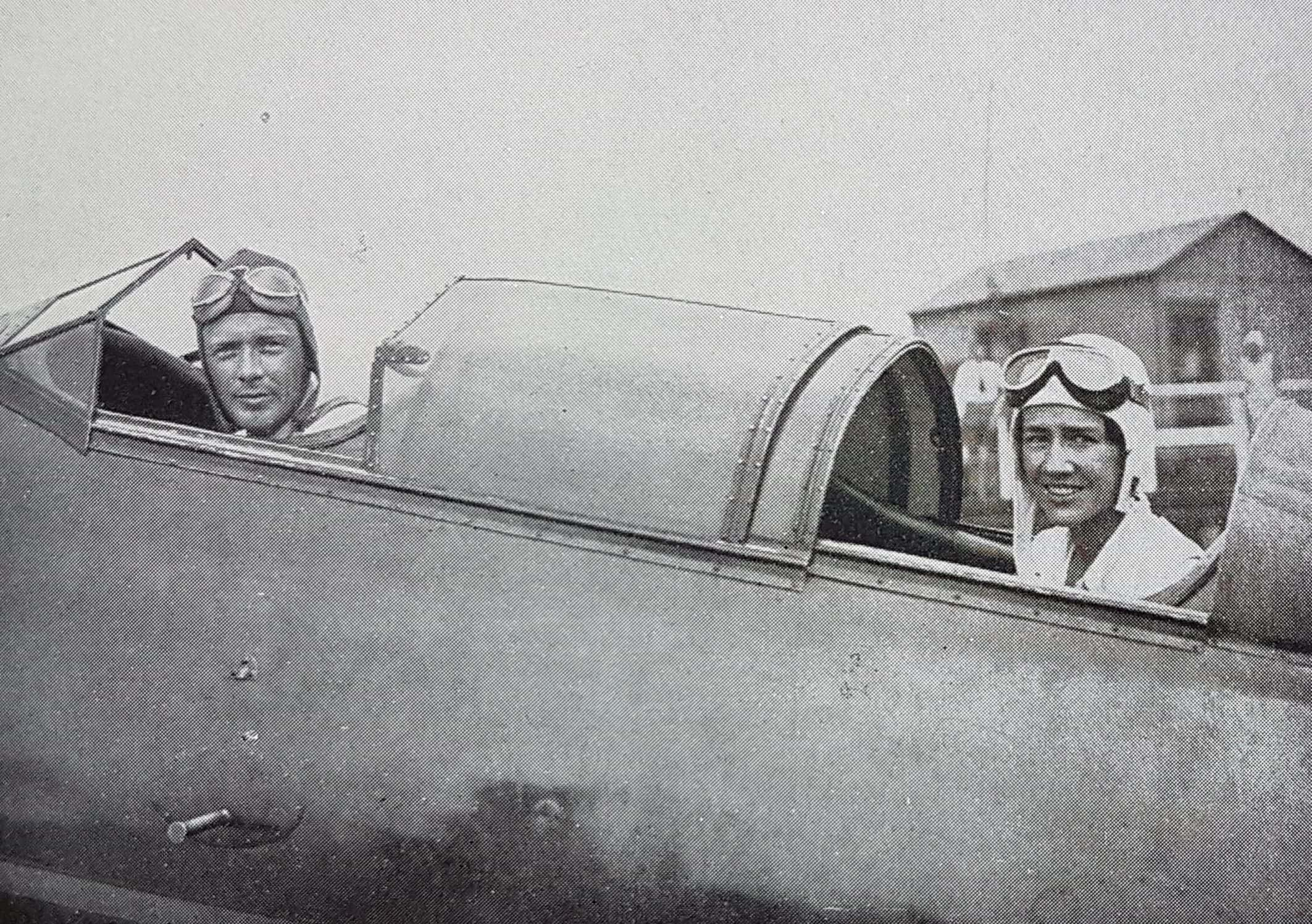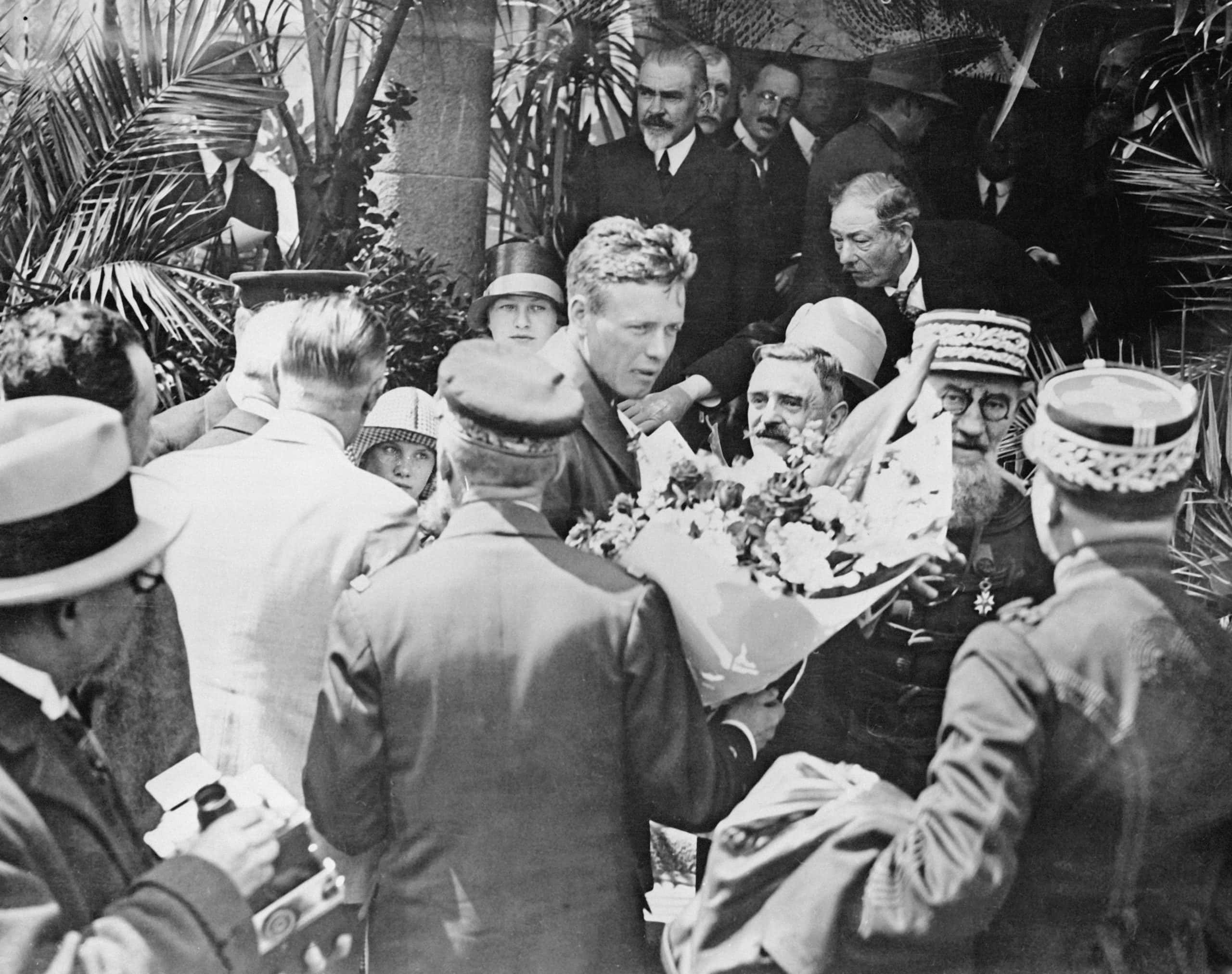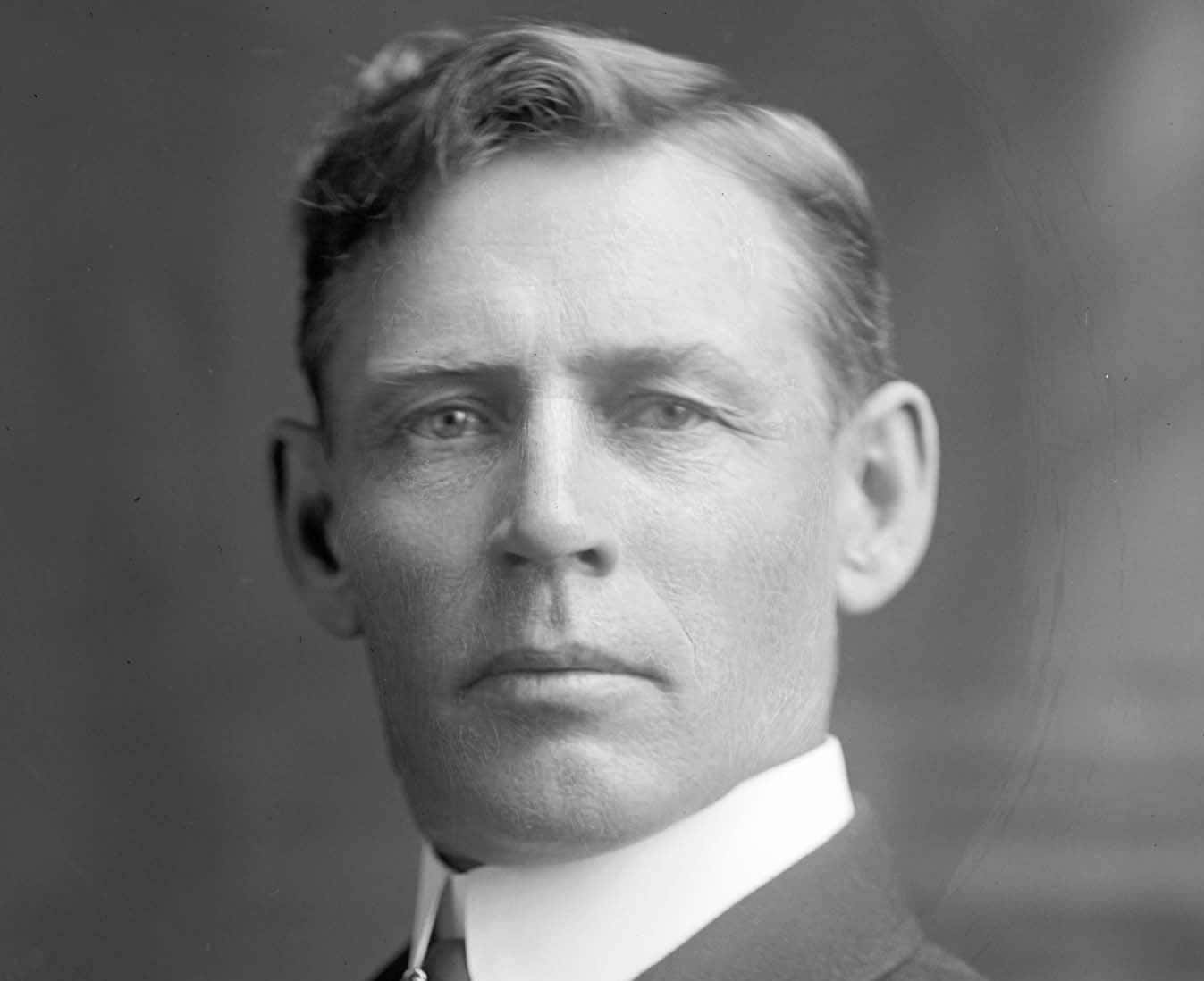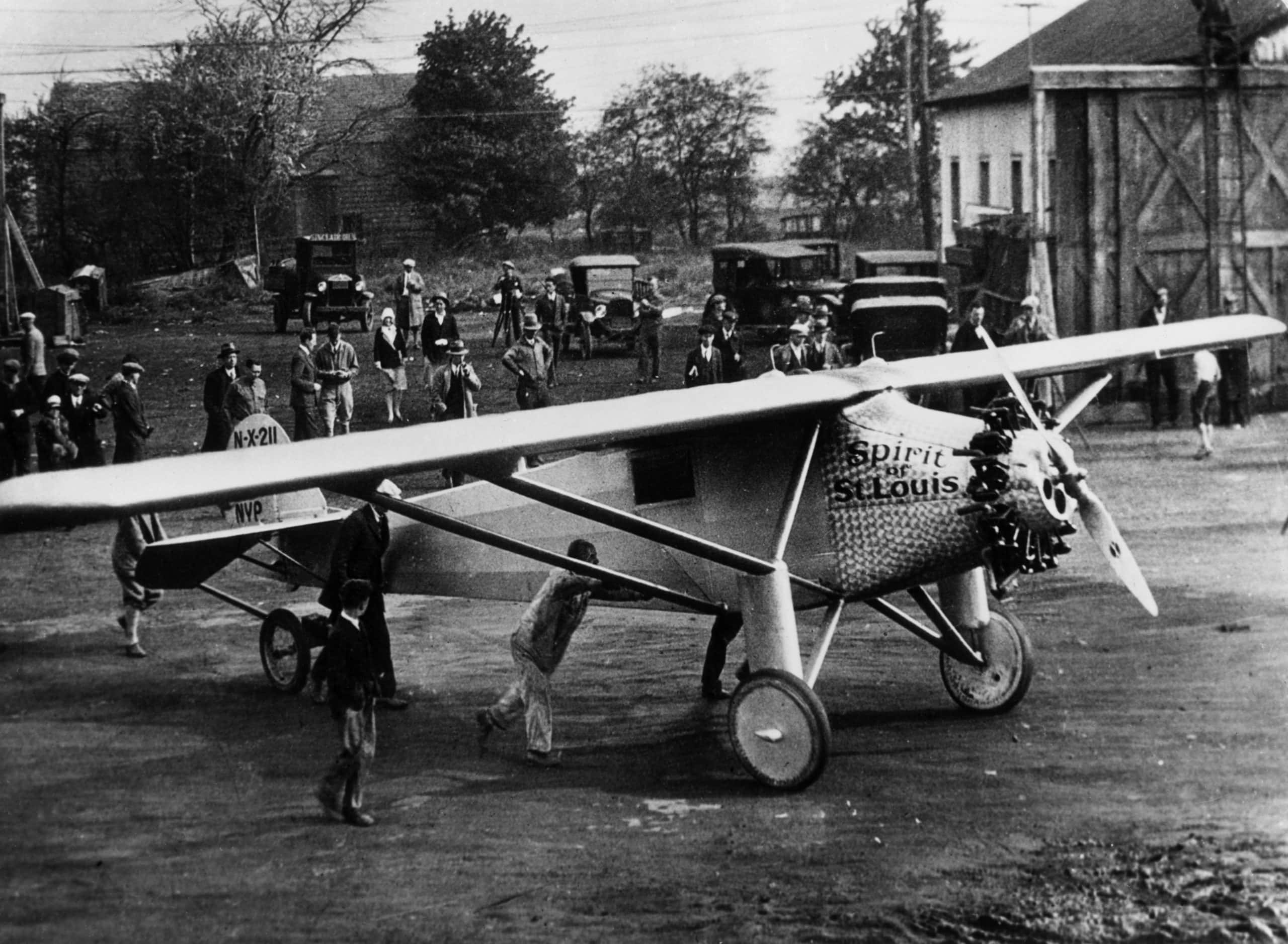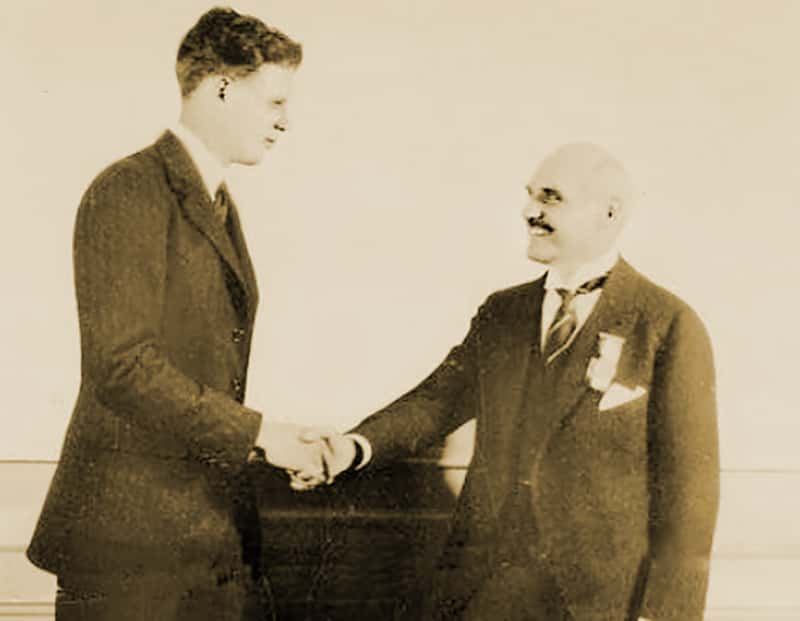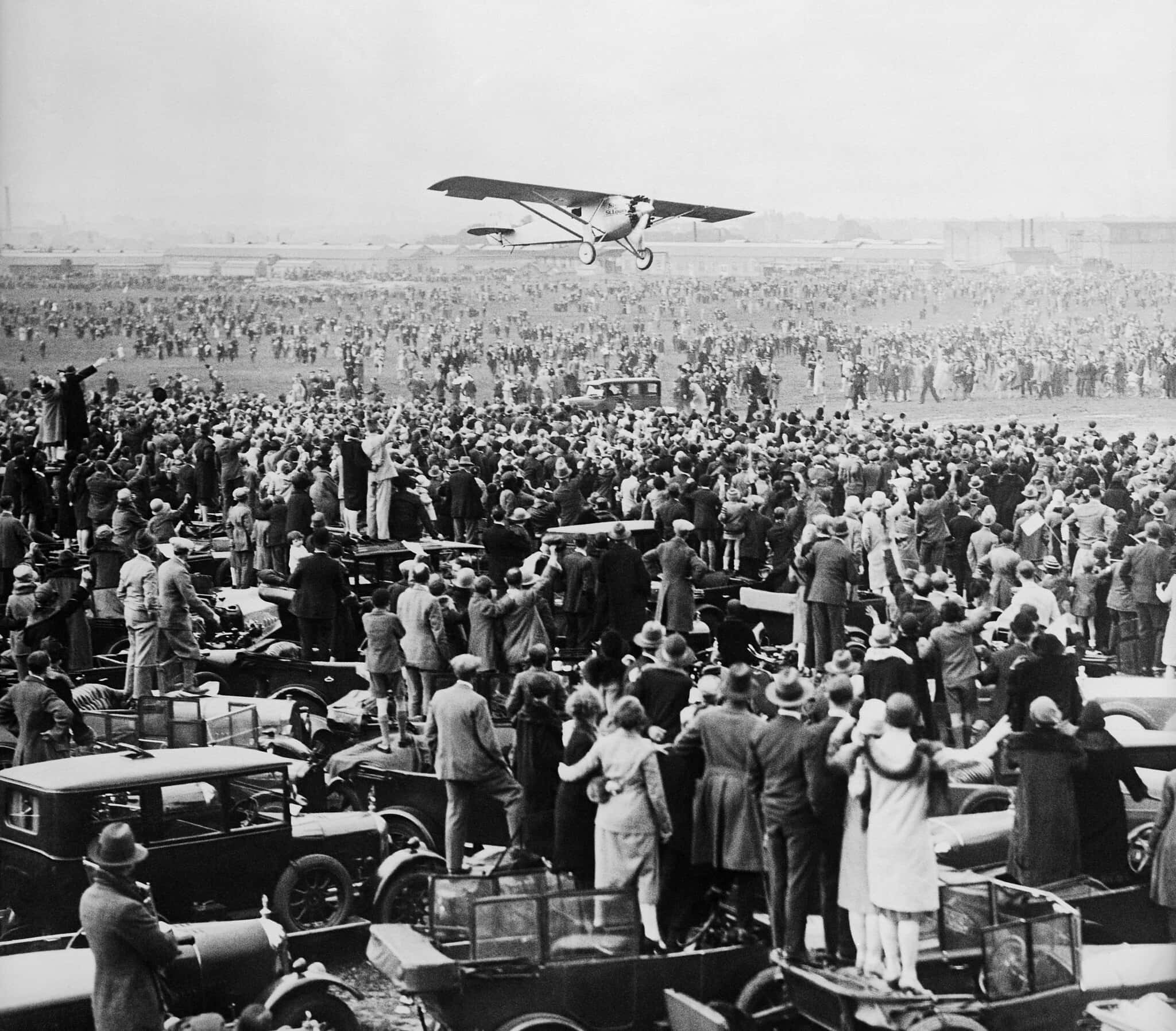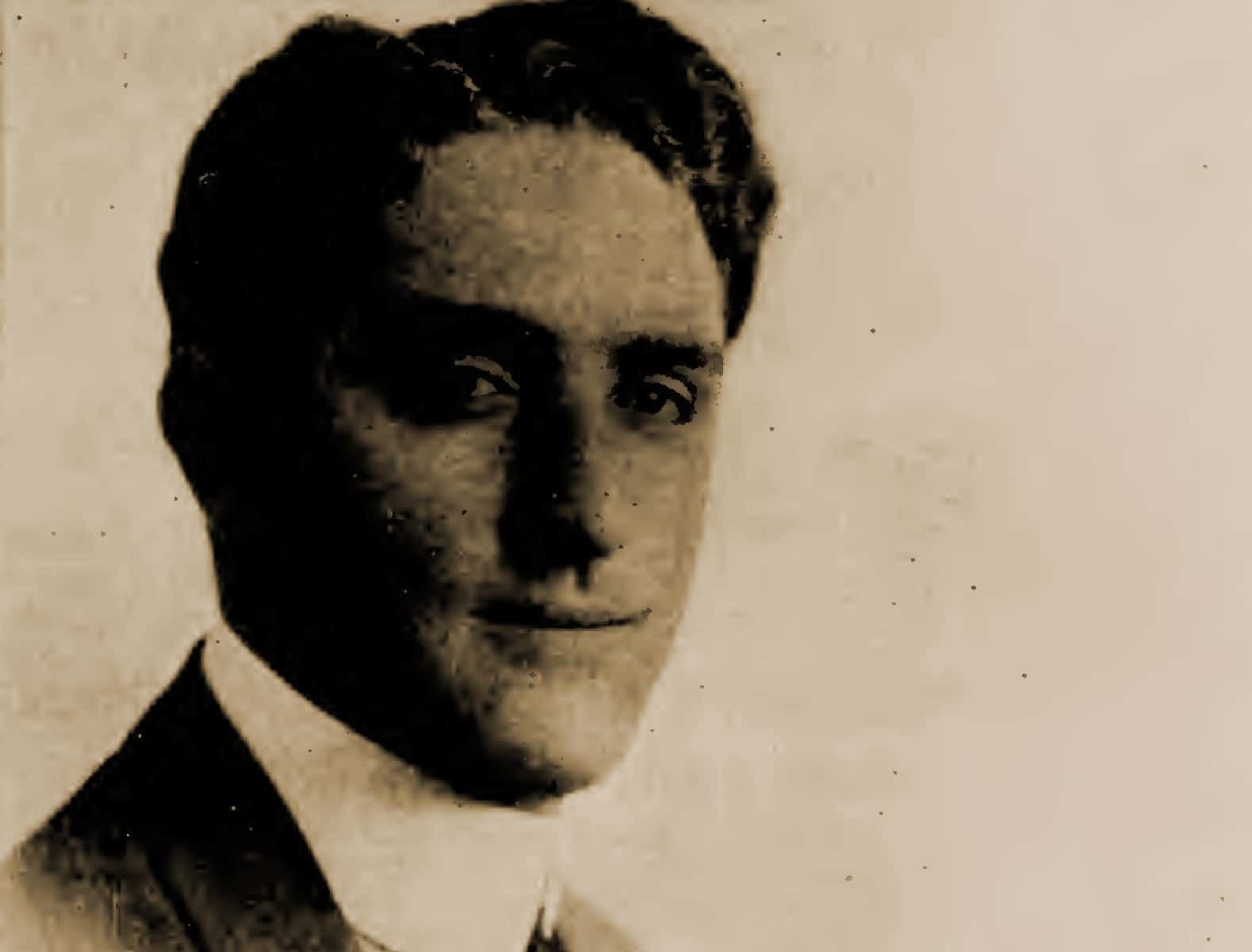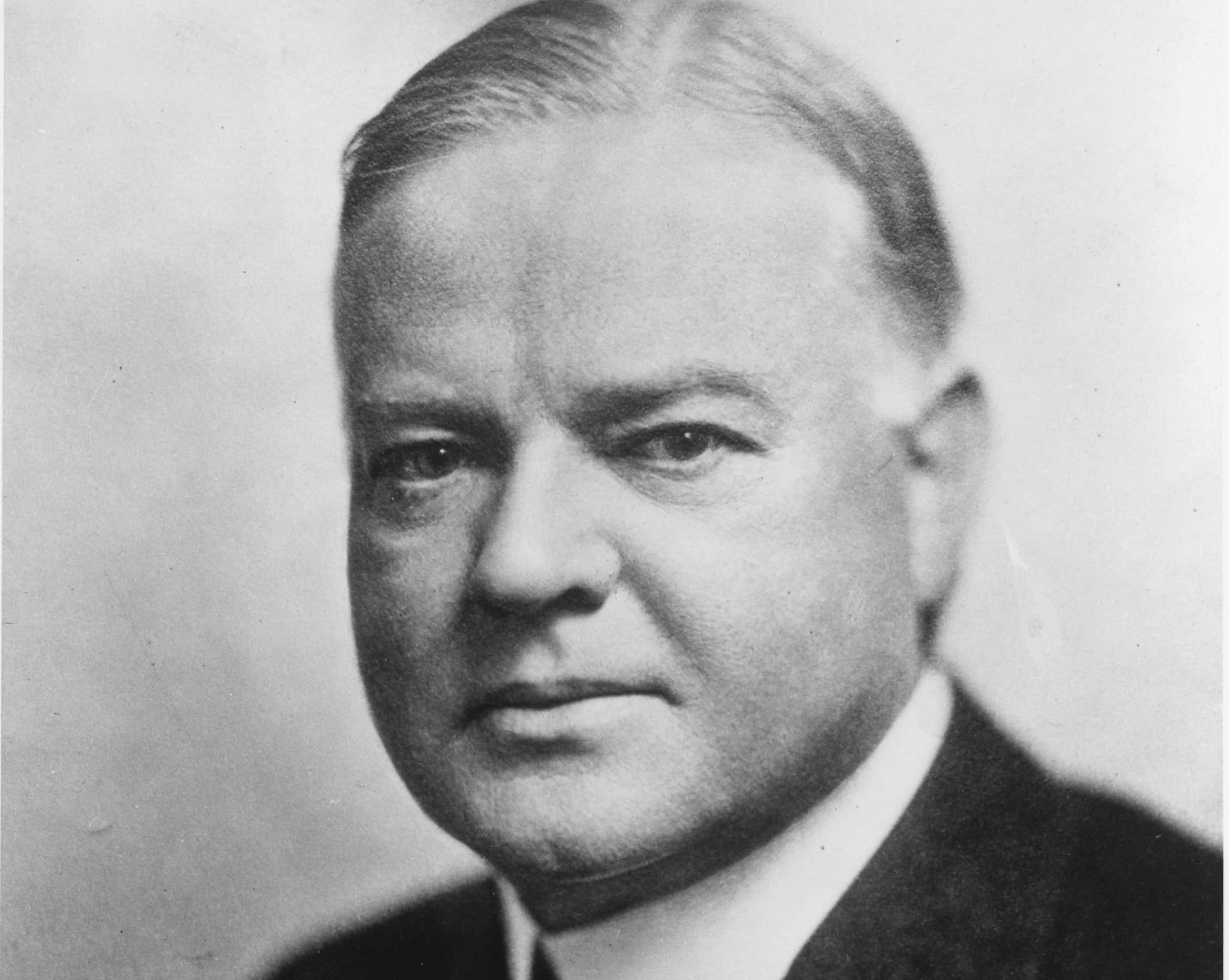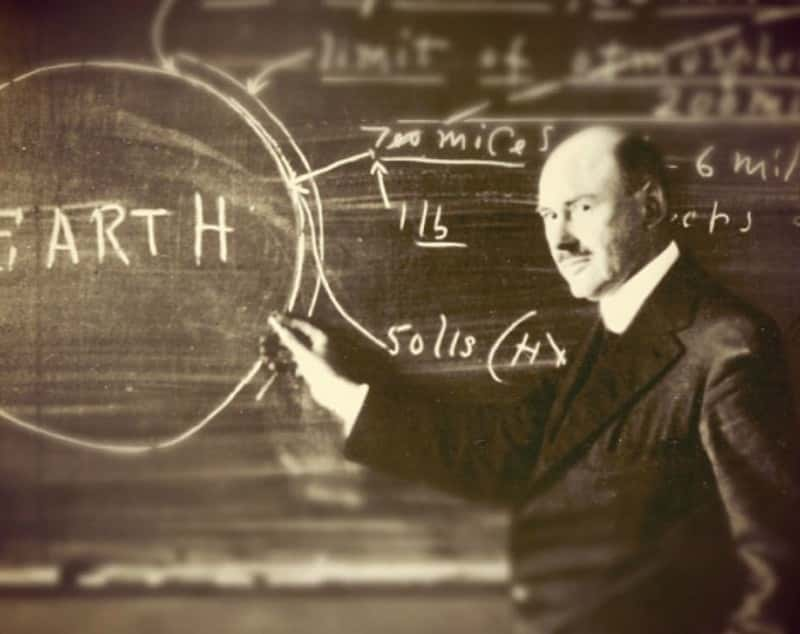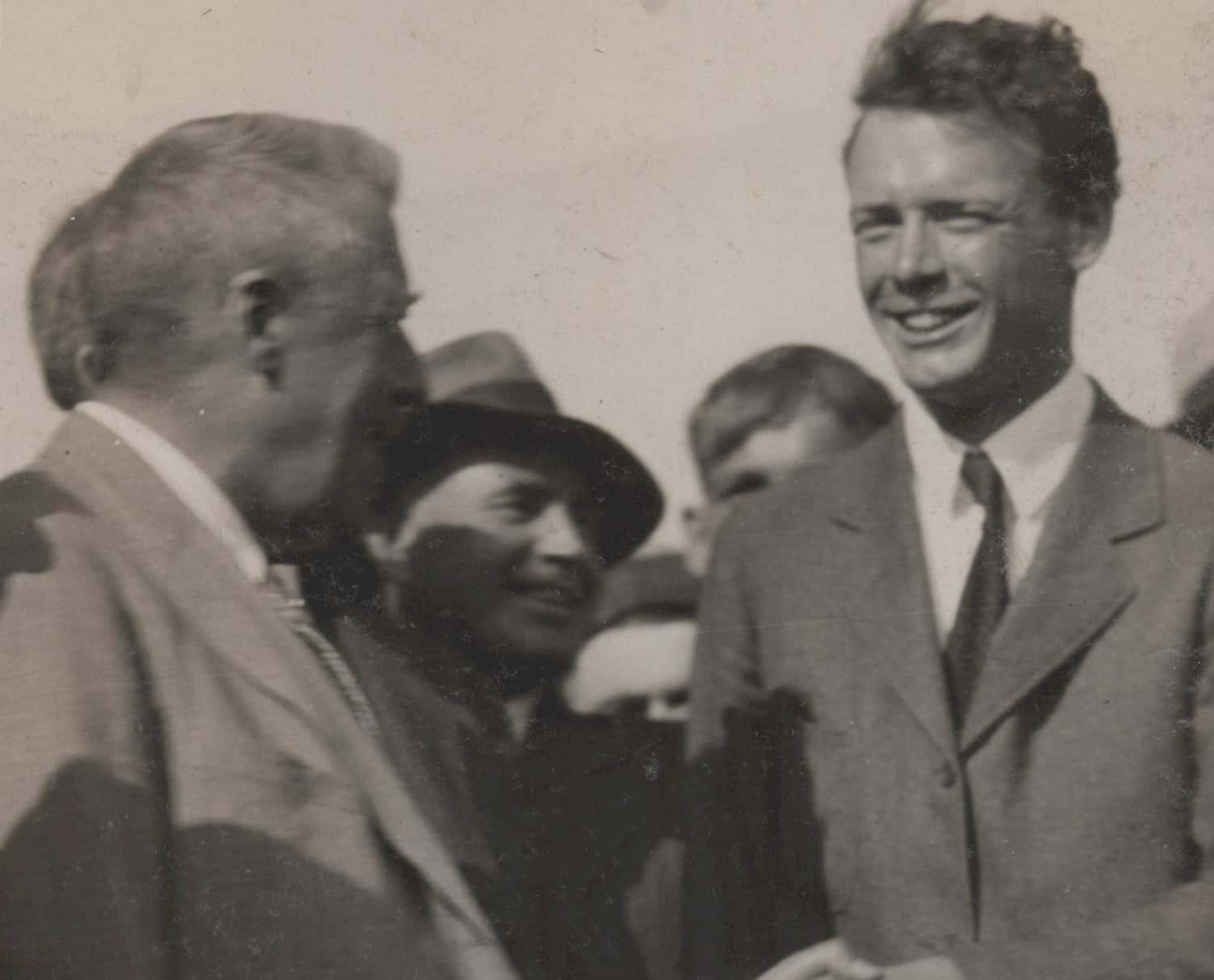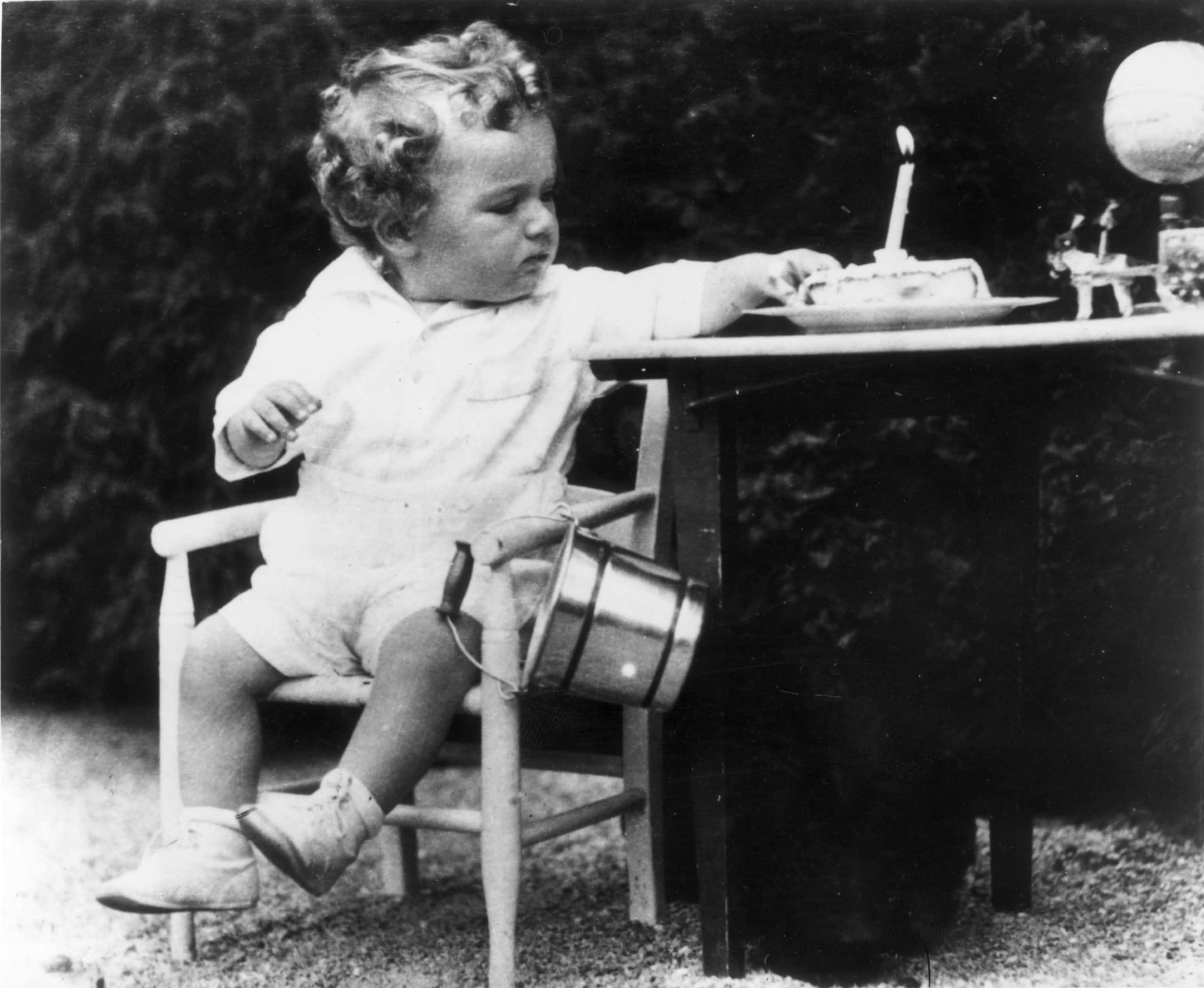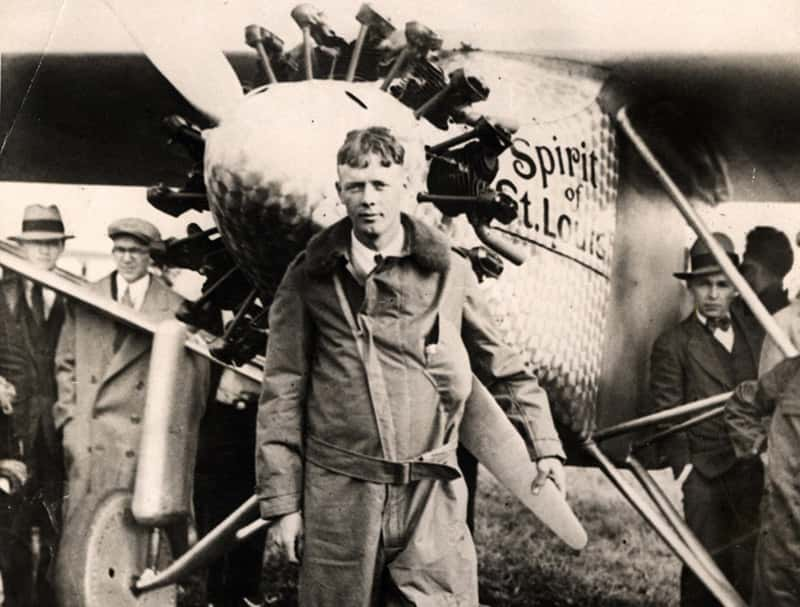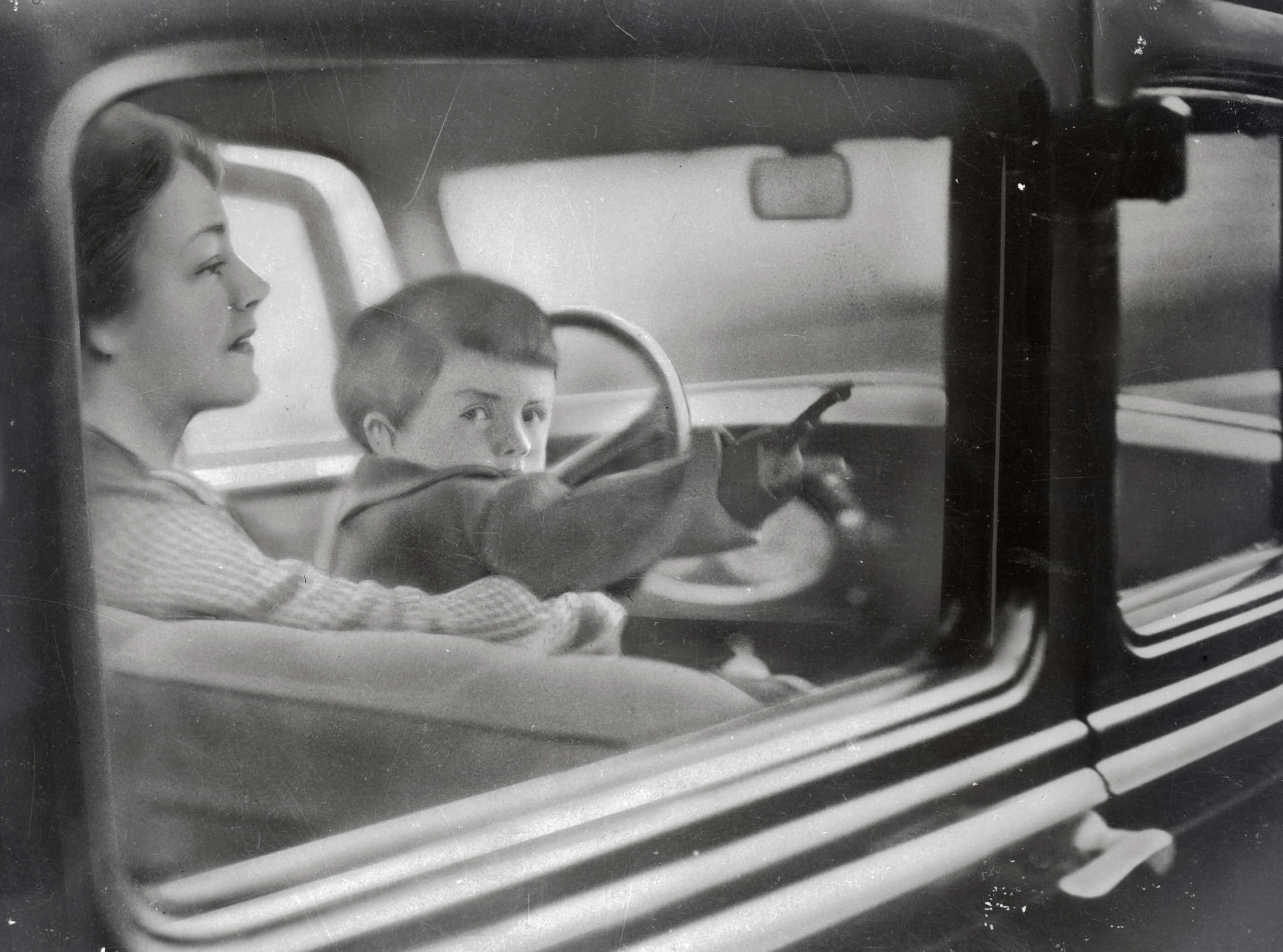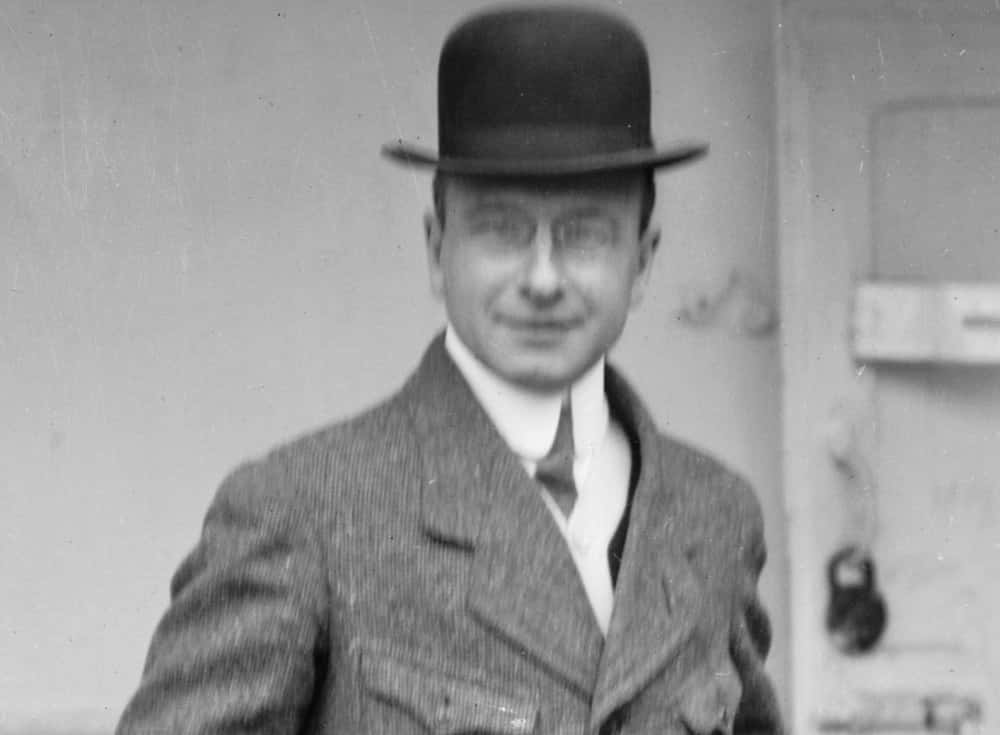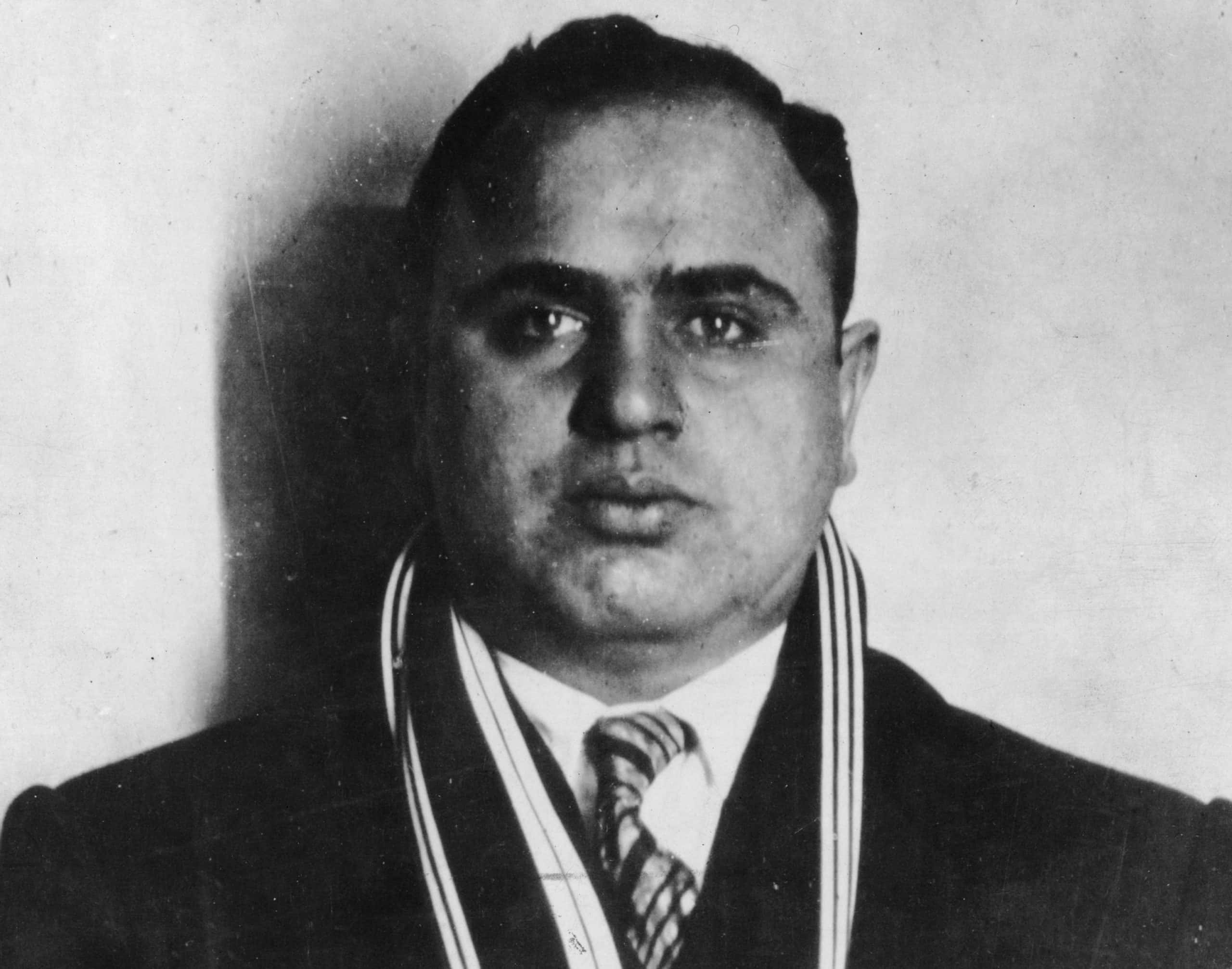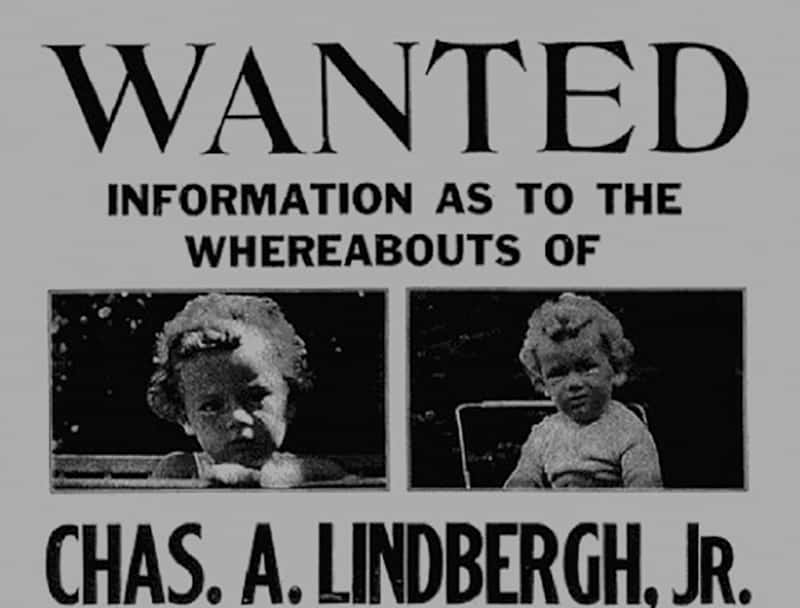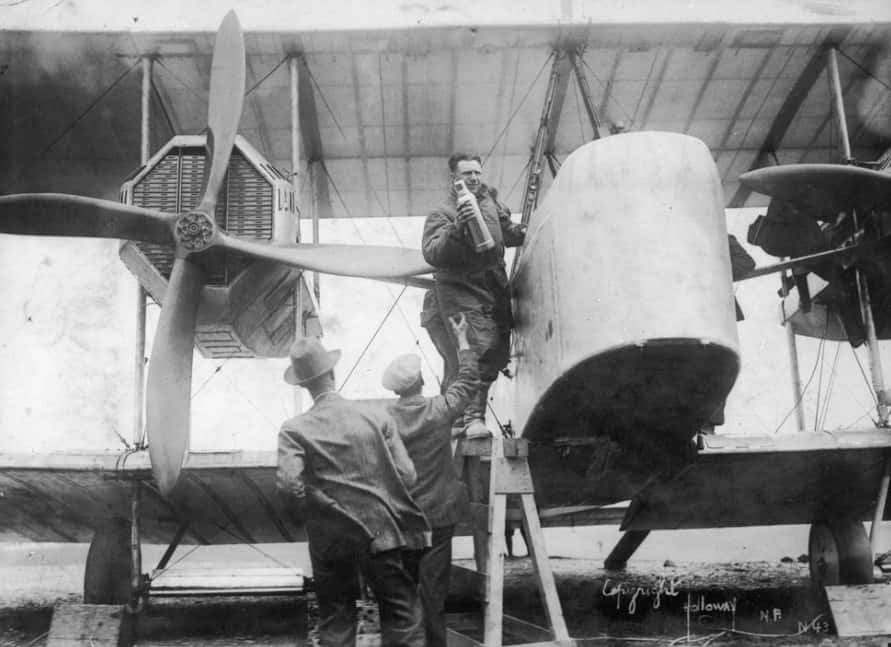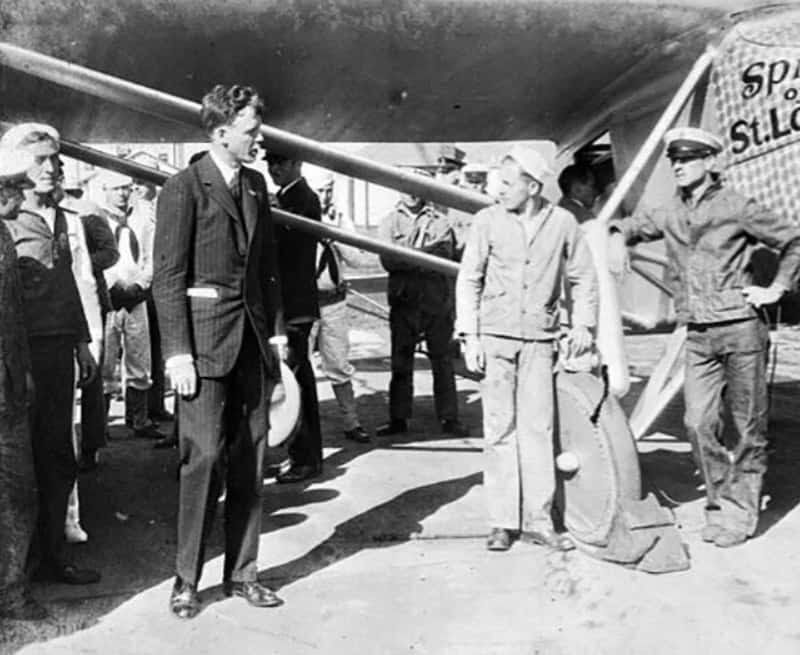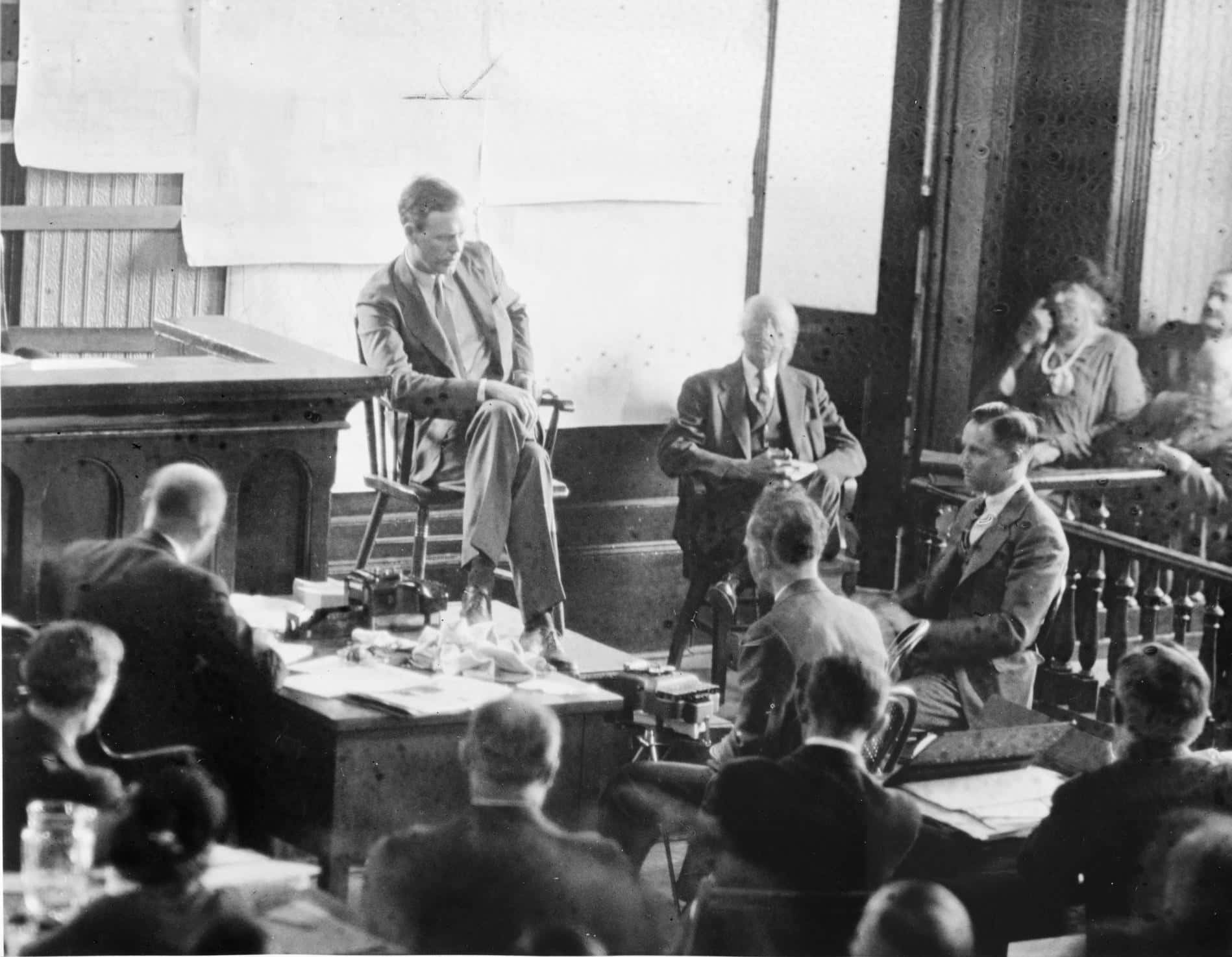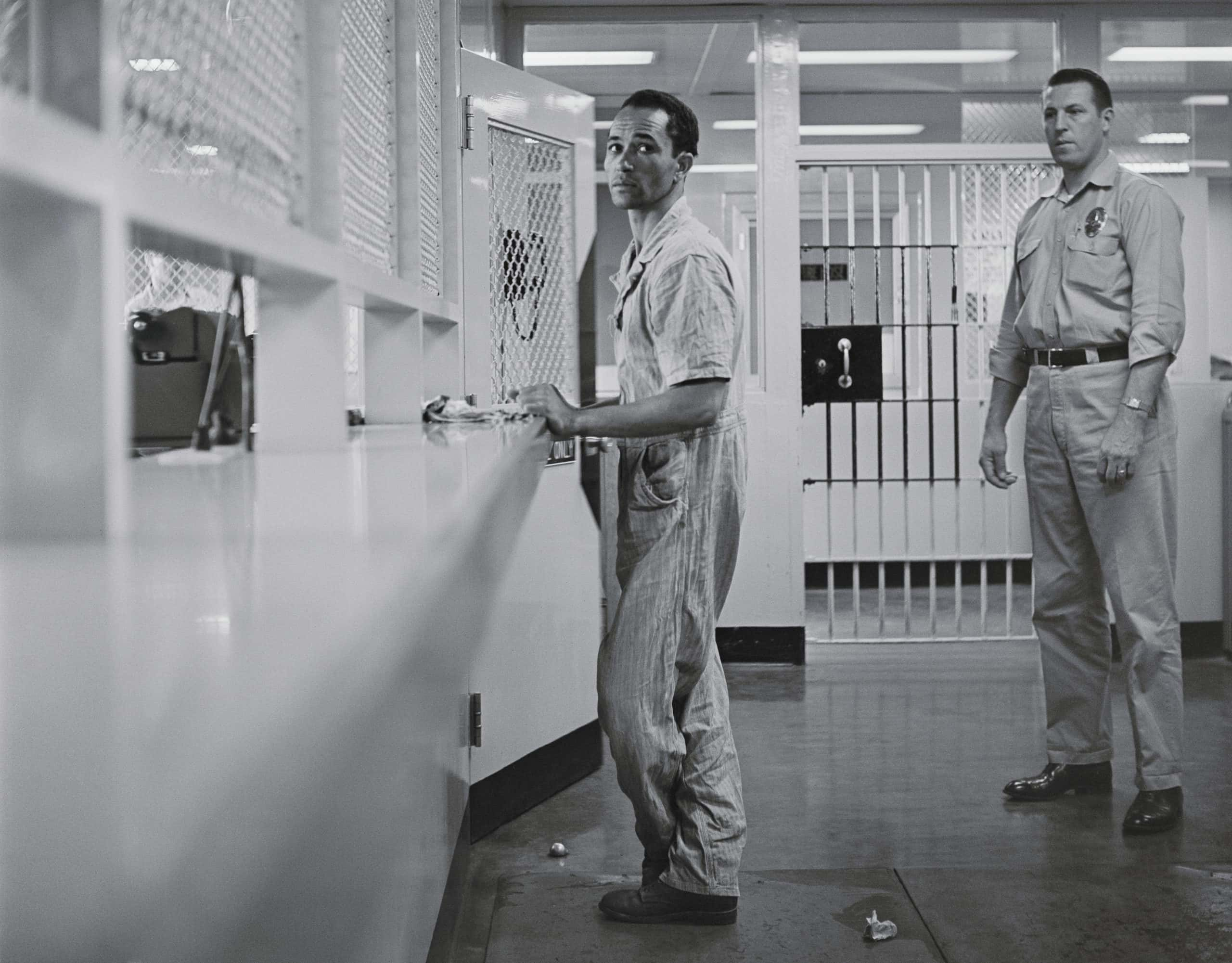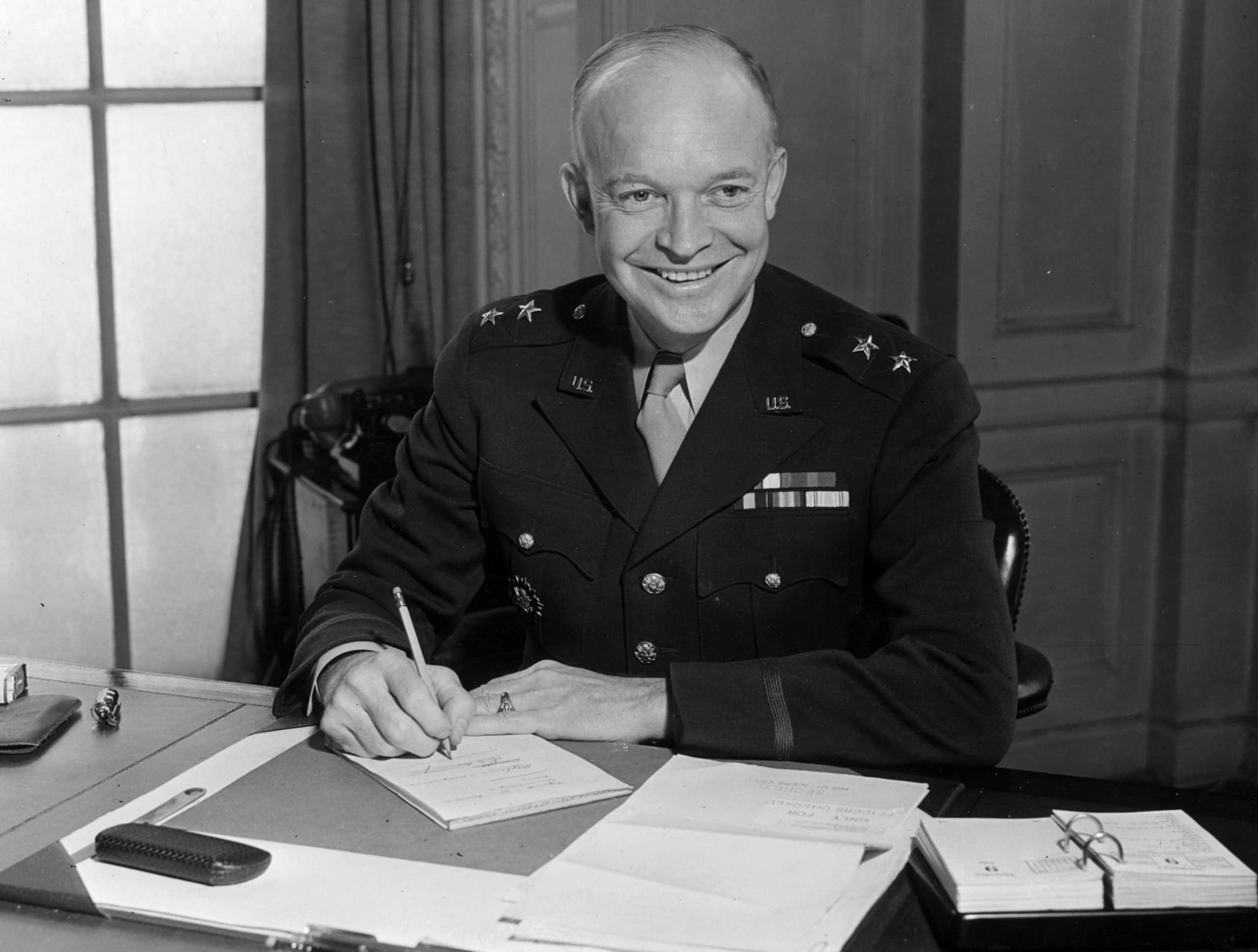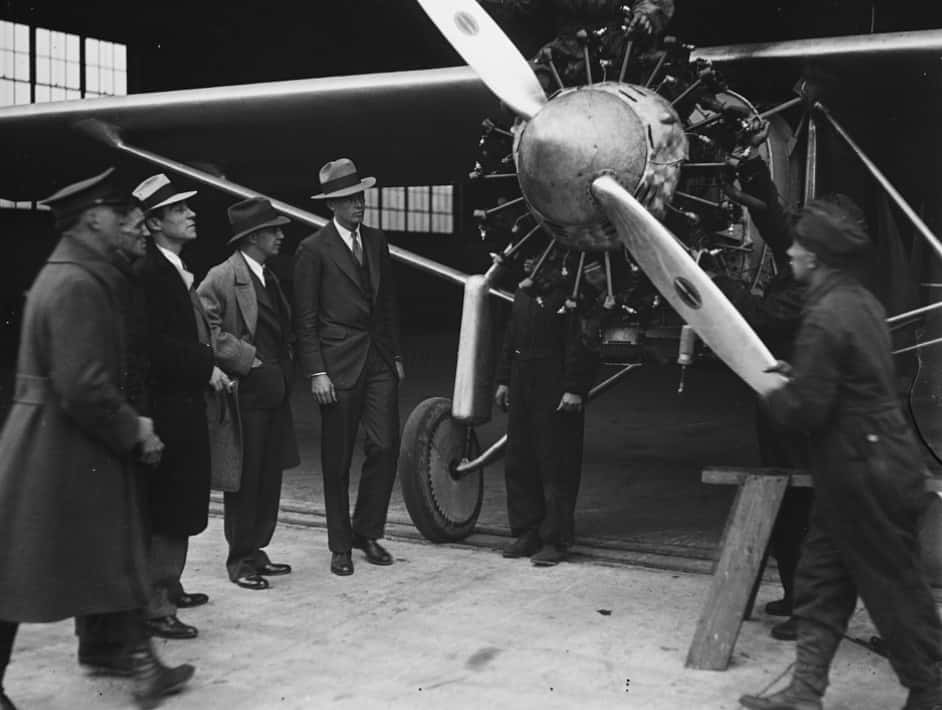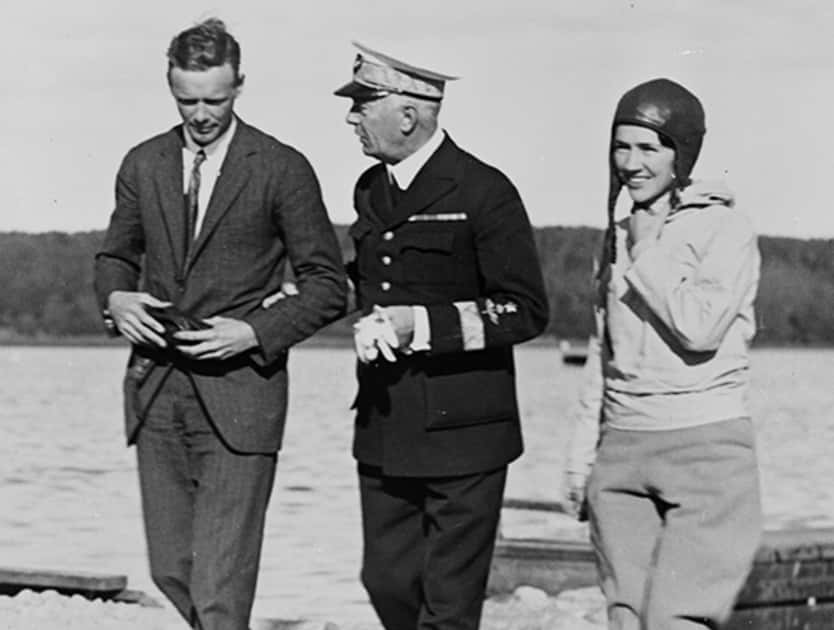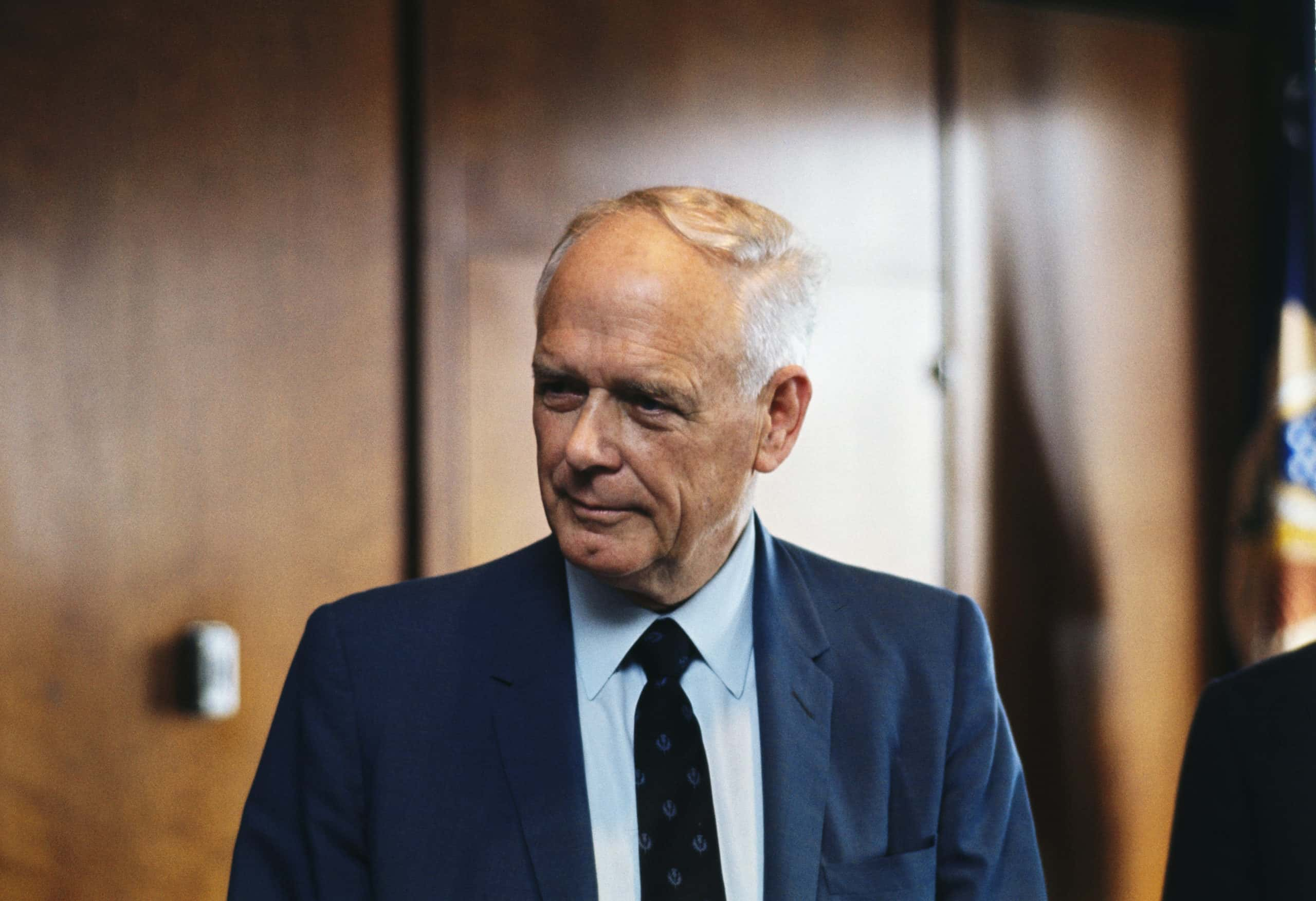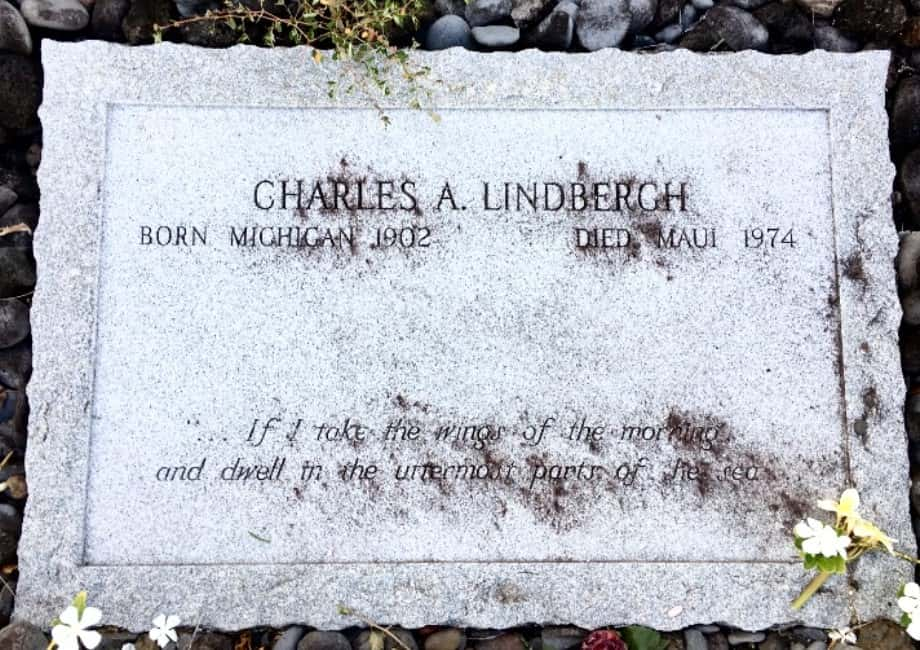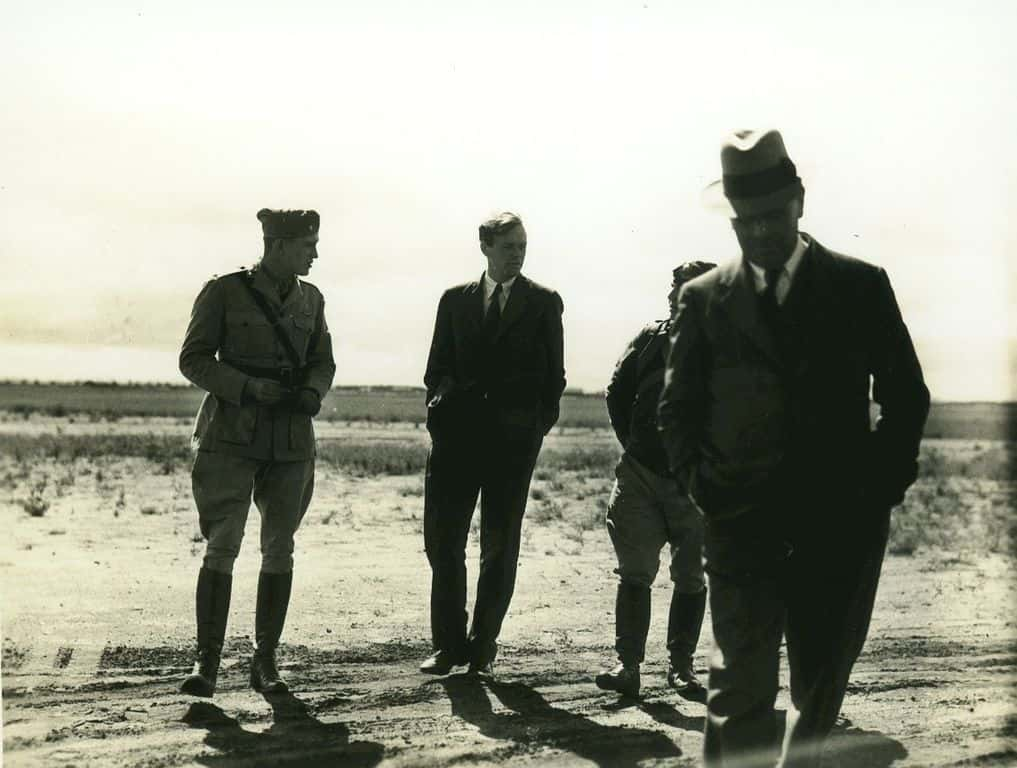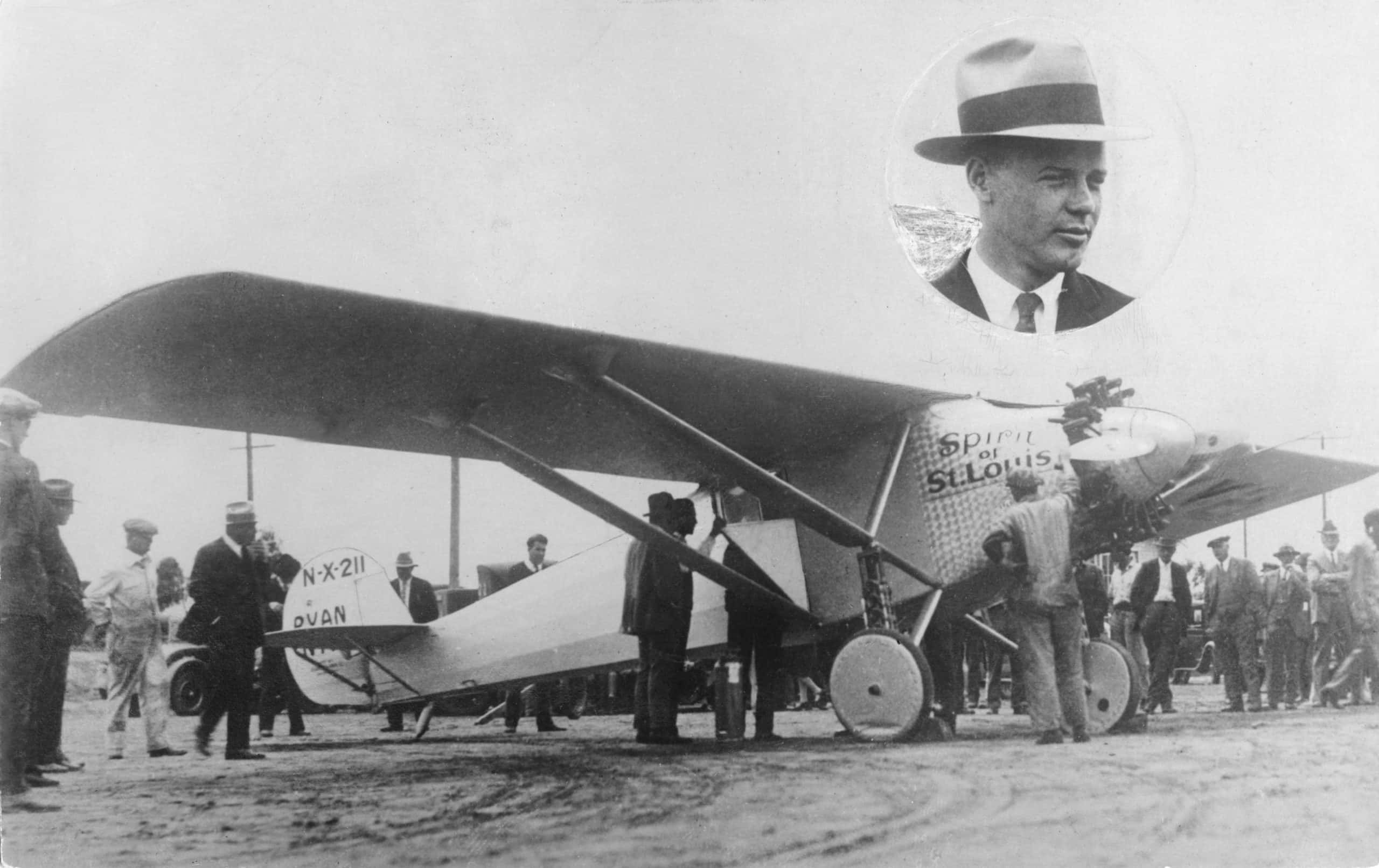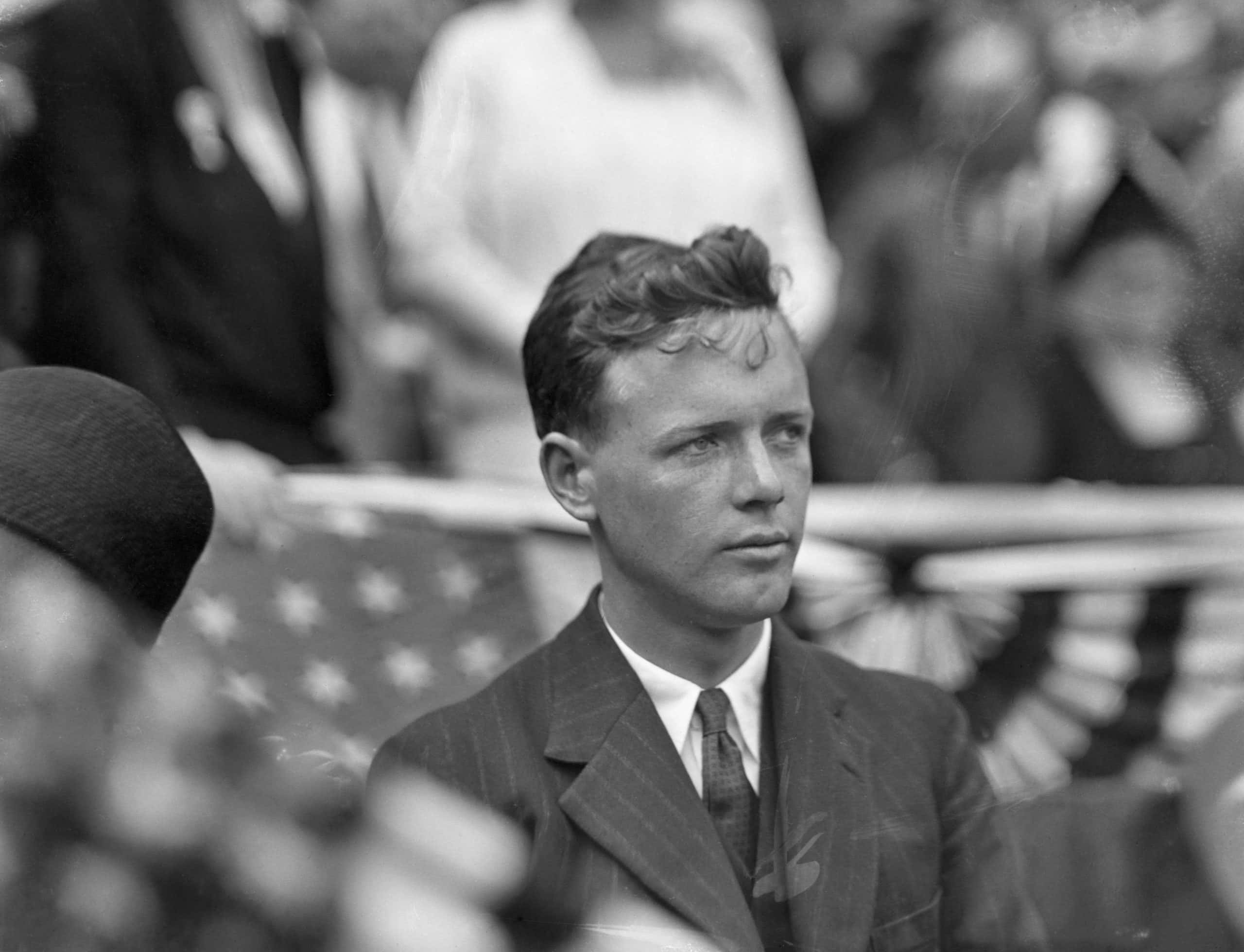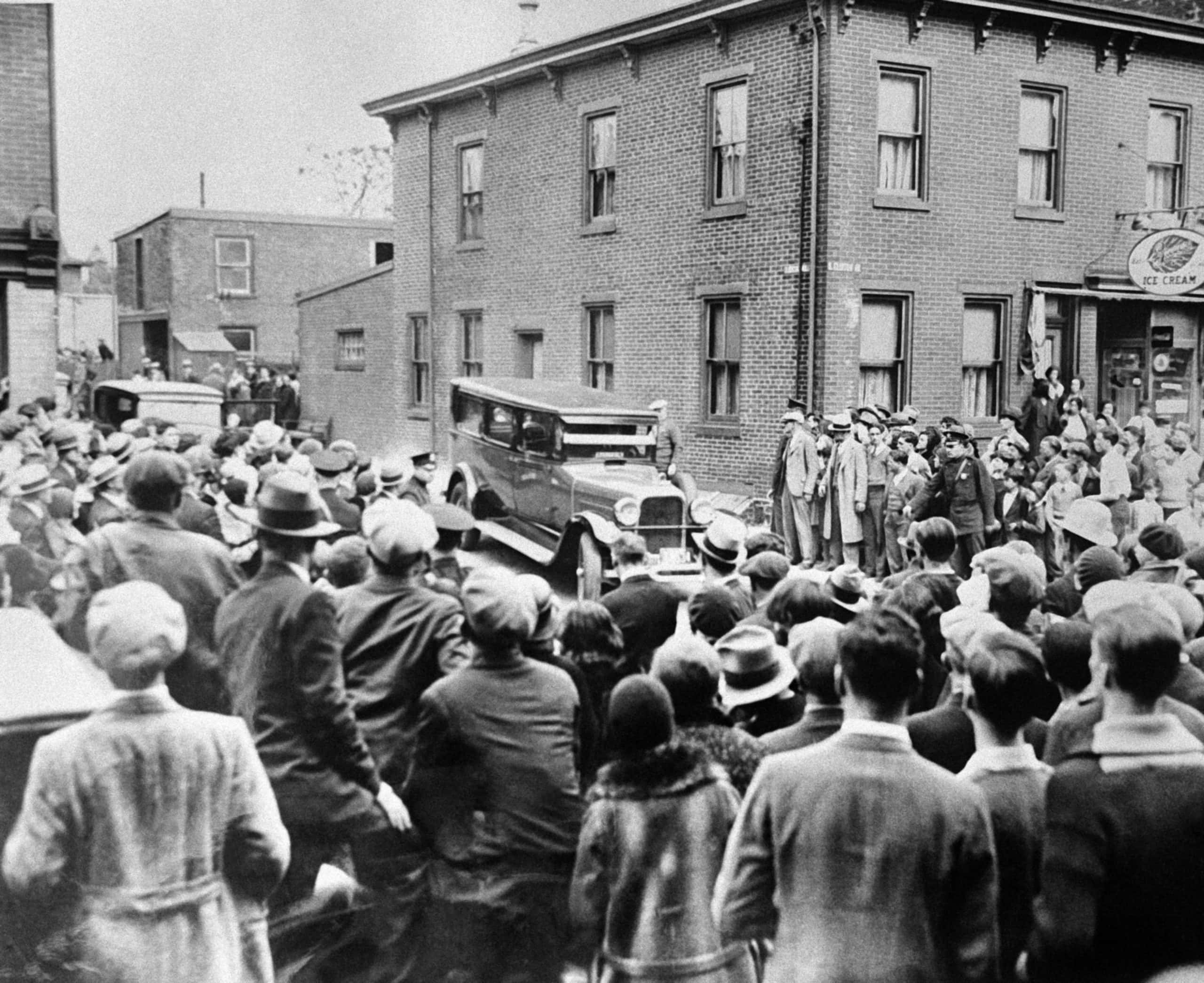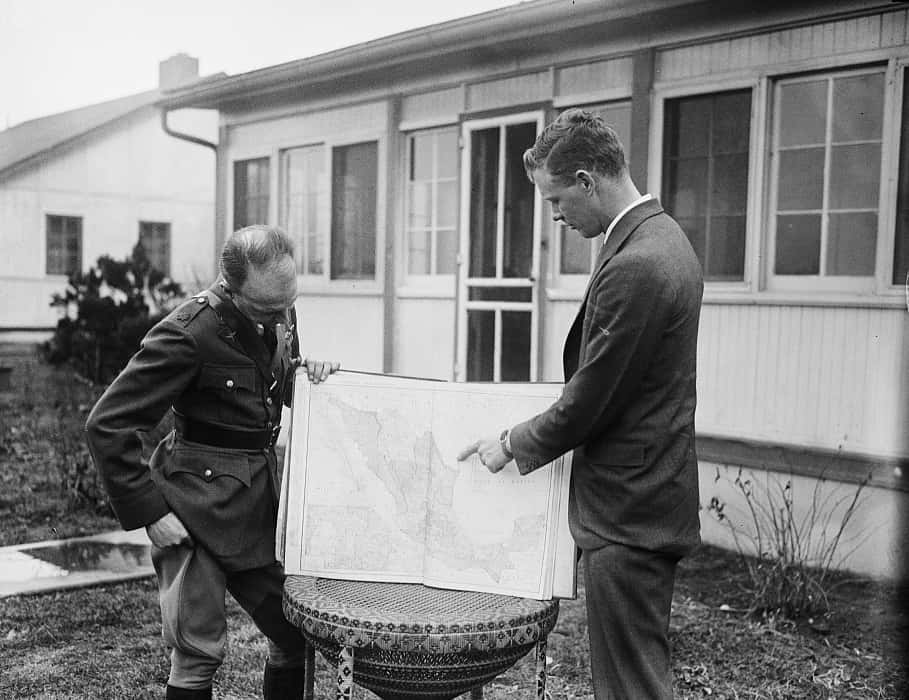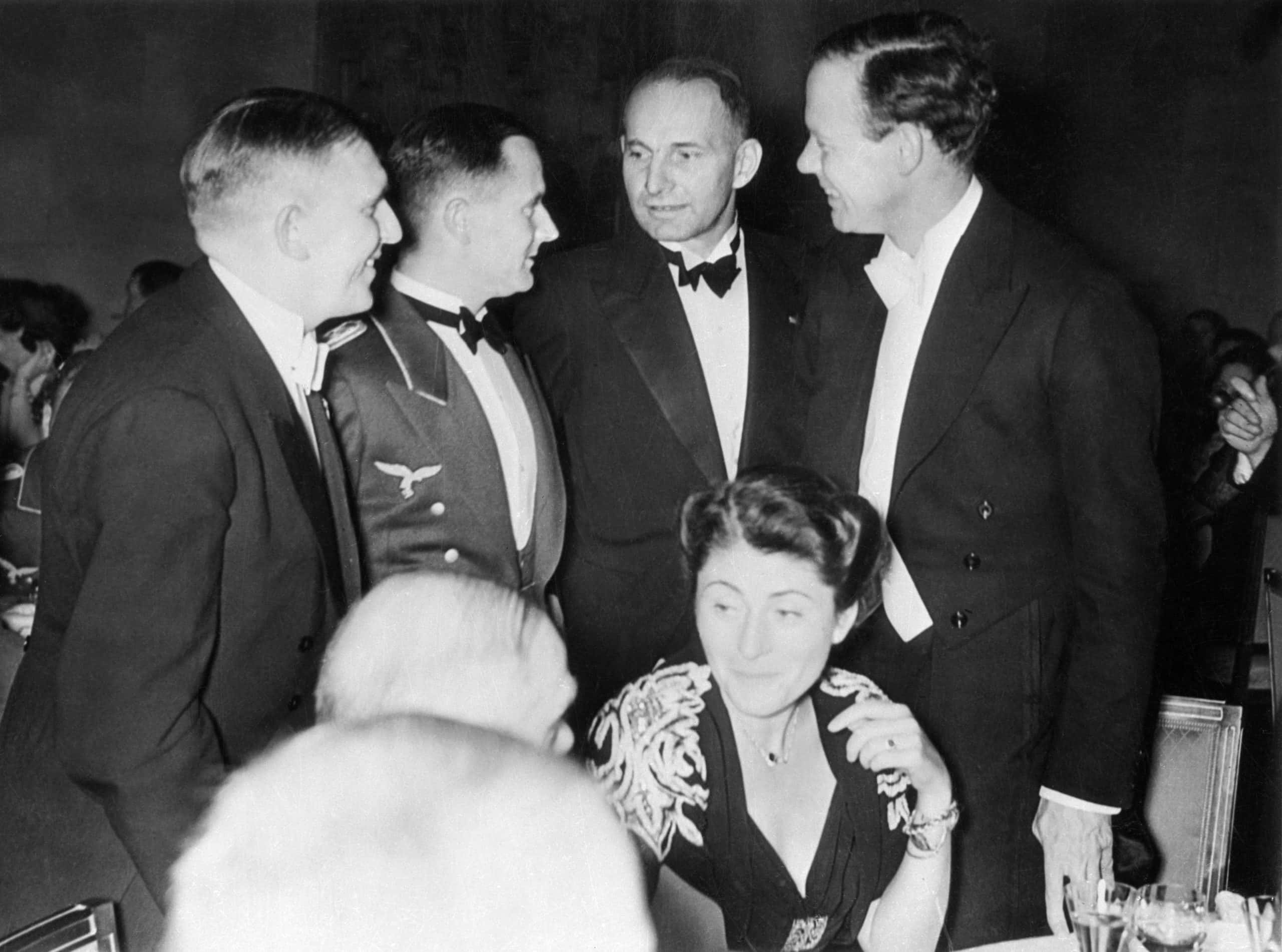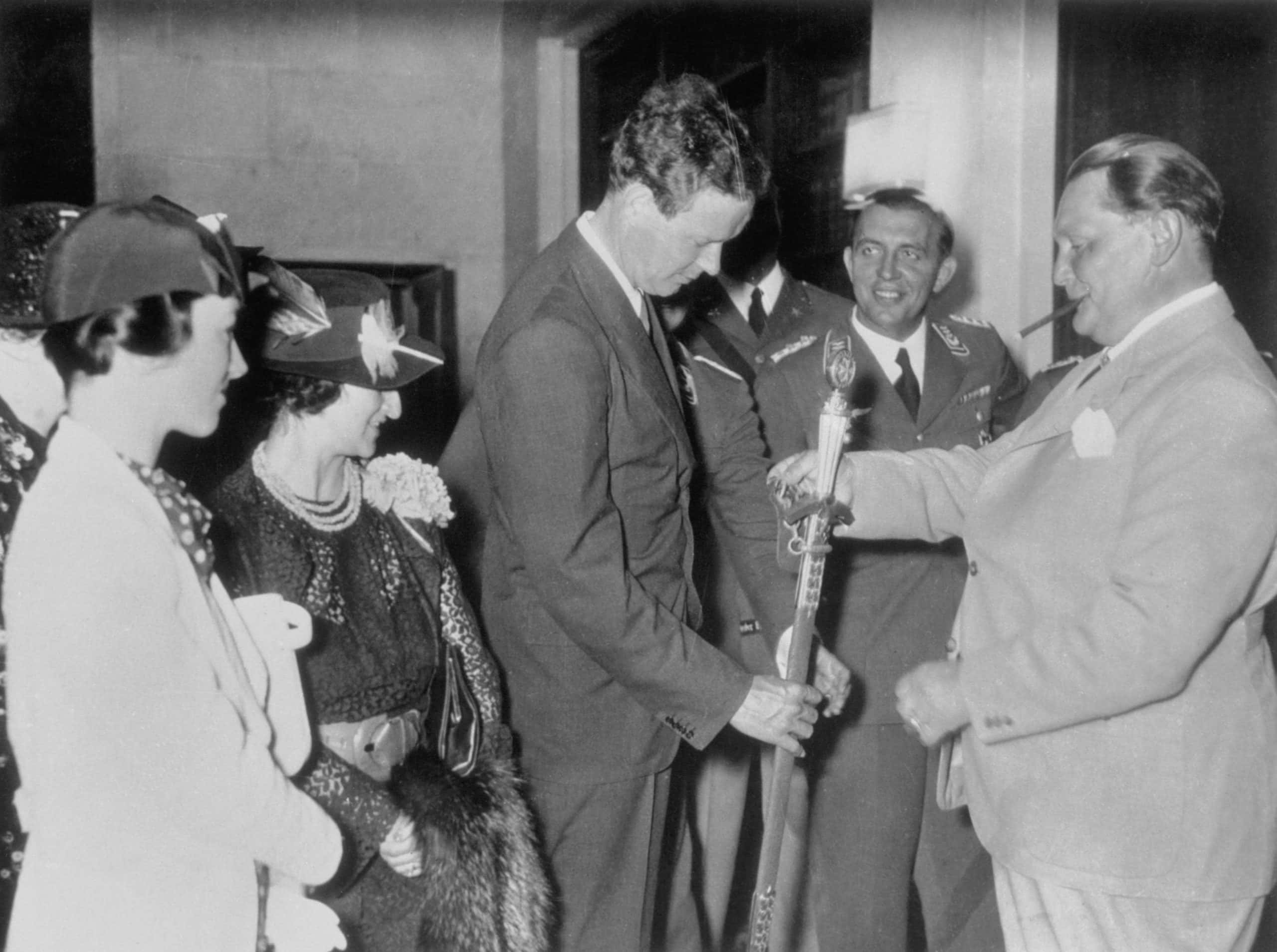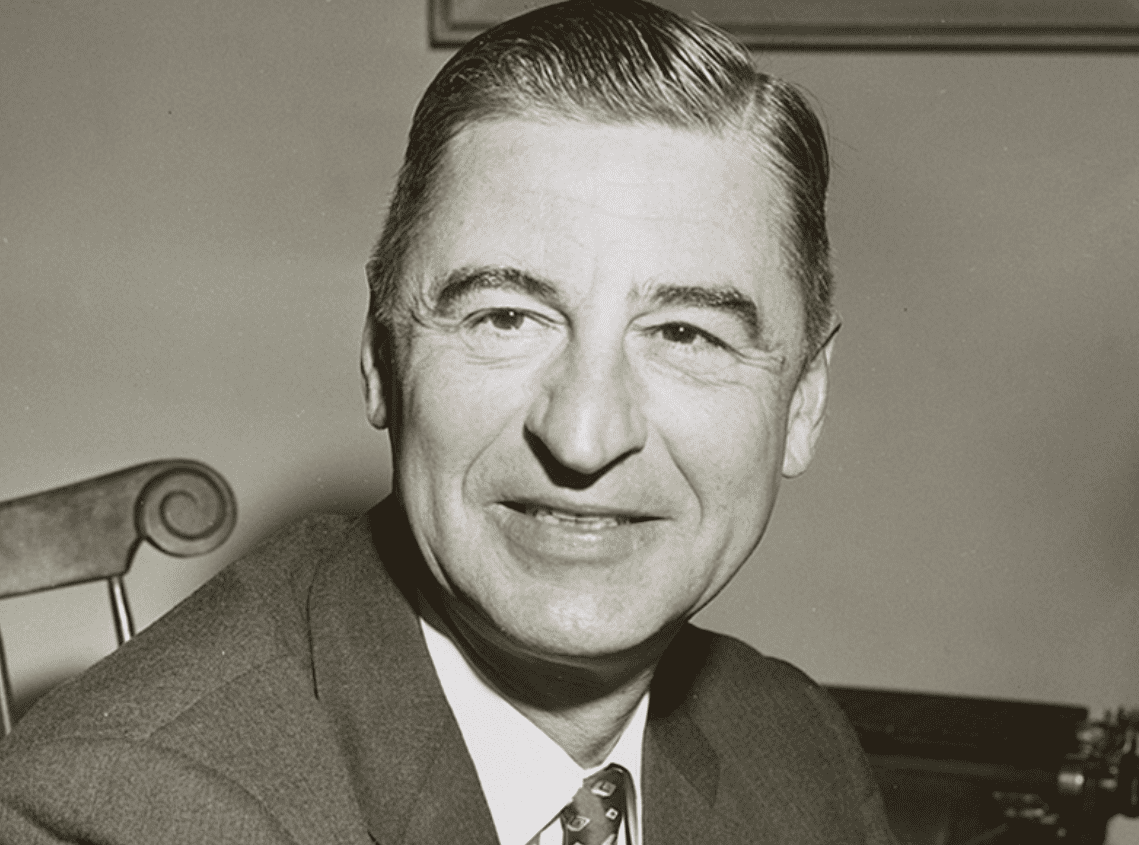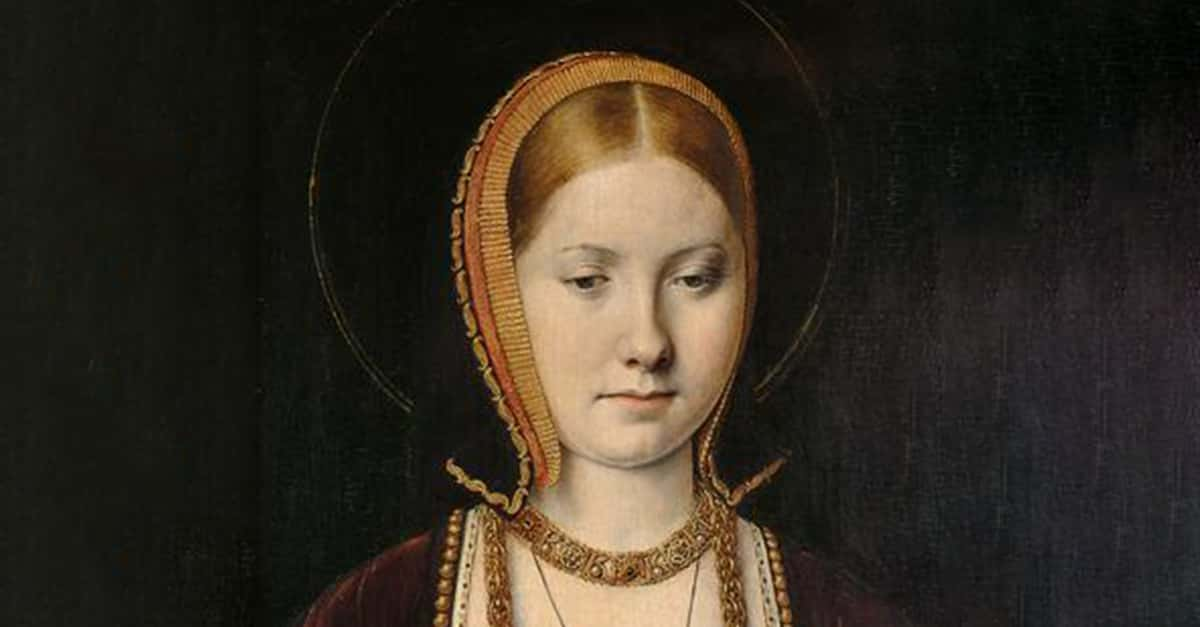“How long can men thrive between walls of brick, walking on asphalt pavements, breathing the fumes of coal and oil, growing, working, dying, with hardly a thought of wind, and sky, and fields of grain, seeing only machine-made beauty, the mineral-like quality of life?”—Charles Lindbergh.
Most people remember him as either a highly accomplished pilot, or a bereaved father whose family troubles filled the newspaper headlines. Charles Lindbergh has faded somewhat from the popular imagination, but his influence is impossible to deny. More than flying alone across the Atlantic or losing a child in a horrific kidnapping, Lindbergh’s legacy was that of an enormous celebrity whose fame couldn't hold off tragedy and controversy. So how did this happen? What really happened in the kidnapping case? What else is there to know about Charles Lindbergh? We’ve provided a list to try and answer those questions about this polarizing figure of human achievement.
Charles Lindbergh Facts
42. Where I Began
Charles Augustus Lindbergh was born in Detroit on February 4, 1902. He spent most of his childhood growing up in Washington, DC and Little Falls, Minnesota.
41. I Wanna Soar!
In 1922, Lindbergh dropped out of studying mechanical engineering in college to pursue his dream of flying. That same year, he finally achieved that dream when he was a passenger in a two-seat Lincoln Standard biplane which was flown by Otto Timm. He began flying lessons soon after that.
40. Watch Me!
Before he was ever known as a pilot who flew across the Atlantic Ocean, Lindbergh was known as a barnstormer. Barnstormers were pilots who performed stunts with their planes, much to the delight of audiences on the ground.
39. Happy Landing
When he finally completed his trans-Atlantic flight, Lindbergh landed his plane in Paris, specifically Le Bourget Aerodrome, their principal airport at the time. Amazingly, the airport wasn’t marked on his map, and all he knew was that he had to find his landing location “seven miles northeast of the city.”
38. Meet Your Wife
In 1927, while visiting Mexico City, Lindbergh met Anne Morrow, the daughter of one of his financial advisors. They would marry in 1929 and go on to have six children together. Sadly, their firstborn child was Charles Lindbergh Jr., the victim of a tragic kidnapping that horrified the nation (more on that later).
37. If You Land It, They Will Come
When Lindbergh landed the “Spirit of St. Louis” plane in Paris, more than 150,000 people had gathered to welcome him to France. In fact, they caused what became known as “the largest traffic jam in Paris history.”
36. Speedy Delivery!
Aside from barnstorming, Lindbergh was also known as a delivery pilot. He flew planes on behalf of US Air Mail, traveling across the country.
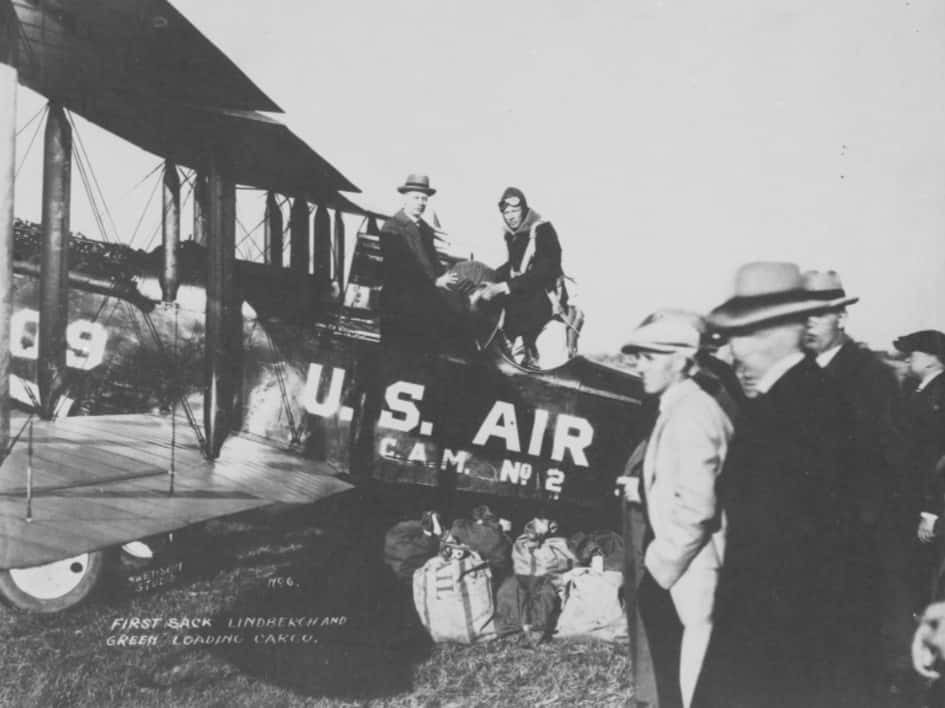 U.S. National Archives & DVIDS
U.S. National Archives & DVIDS
35. Dad’s Example
Lindbergh’s father, Charles August, became a member of the US Congress when Lindbergh was a toddler. Lindbergh Sr. became known for his vocal opposition to US entering the First World War, to the point where he was accused of sedition.
34. I Look a Bit Too Old…
The most well-known portrayal of Lindbergh on the screen was the 1942 film The Spirit of St. Louis. Hollywood star James “Jimmy” Stewart was a longtime admirer of Lindbergh and was himself an aviator who had flown bombing missions during the Second World War. Unfortunately, while he was making the movie, Stewart was was twice as old as Lindbergh was at the time that he flew across the Atlantic! That kind of age difference contributed to the film’s critical and commercial failure.
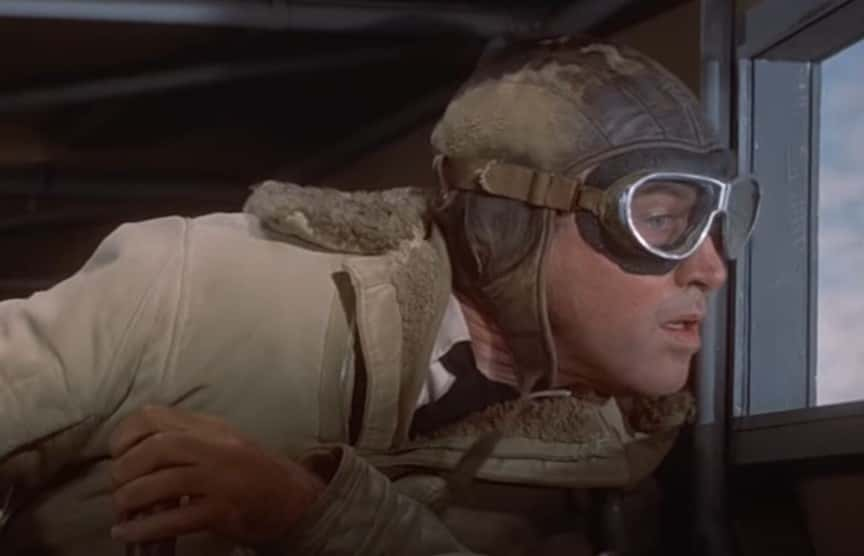 The Spirit of St. Louis (1957), Warner Bros.
The Spirit of St. Louis (1957), Warner Bros.

Sign up to our newsletter.
History’s most fascinating stories and darkest secrets, delivered to your inbox daily. Making distraction rewarding since 2017.
33. Balanced Plane
In order to fly across the Atlantic successfully, Lindbergh flew his monoplane while it was loaded with 450 gallons of fuel. In total, the plane weighed more than 5,100 pounds.
32. International Recognition
Throughout his life, Lindbergh was granted several honors, not just from the US. He was awarded Commander of the Legion of Honor by France, the Air Force Cross by the UK, and Knight of the Order of Leopold by Belgium.
31. Sleep is for Wussies!
Lindbergh’s flight across the Atlantic lasted more than 33 hours. If you add up the time he spent preparing for this non-stop flight, that means he spent 55 hours awake.
30. A Song on Your Lips
In an example of musicians watching the news for inspiration, Lindbergh’s trans-Atlantic flight inspired many popular songs soon after he completed his flight. One of the most well-known songs made in honor of him was “Lucky Lindy” by L. Wolfe Gilbert and Abel Baer.
29. A Role He was Meant For
Perhaps due to his incredible fame and aviation skills, Lindbergh was appointed to the National Advisory Committee for Aeronautics by President Herbert Hoover.
28. From Air to Space
In 1929, Lindbergh became aware of the scientist Robert Goddard and his experiments with rockets. The two of them began a friendship which lasted until Goddard’s death, with Lindbergh using his status as a celebrity to get funding for his friend. Goddard, who is now known as the “father of modern rocketry," proved an invaluable influence on space exploration. Lindbergh lived to see astronauts go into space, and even land on the moon. He personally praised the astronauts of Apollo 8 for helping to turn Goddard’s dreams into reality.
27. You’re a Star!
The fame of Lindbergh following his flight across the ocean can’t be exaggerated. He could arguably be called one of the first celebrities in American history. He was flooded with adulation, attention, and job offers. According to one writer, the public responded, “as though Lindbergh had walked on water, not flown over it.”
26. Two Weeks Before the Ides
On March 1, 1932, Lindbergh’s home in East Amwell, New Jersey, was broken into. His 20-month old son, Charles Augustus Lindbergh Jr., was stolen from his crib, prompting a public outcry that was unprecedented in its size and scope. The attention impeded any police efforts, including the fact that it was initially listed as a local crime, which meant the federal authorities didn’t have jurisdiction. A ransom payment was made in accordance with a note, using telltale money which authorities hoped could be eventually be traced back to the kidnappers. Sadly, the efforts to bring Charles Jr. to safety were in vain; he was later found dead, and only one man, Richard Hauptmann, was convicted of the crime and executed—though some say that Hauptmann’s guilt is questionable.
25. Business Logo Deals
As some of you might know, the plane which Lindbergh flew across the Atlantic Ocean was called the Spirit of St. Louis. You might be wondering why that was the case, since Lindbergh was born in Michigan. The reason is that a group of St. Louis businessmen financed $15,000 for Lindbergh’s big flight. Probably for the best that Lindbergh wasn’t relying on funds from the town of Walla Walla. Would have made for a slightly less cool-sounding name.
24. That’s Our Charles!
Since that famous flight name-dropping St. Louis, the city has repaid Lindbergh in kind. A high school, highway, and school district are all named in his honor. Not only that, Lindbergh has a star on the St. Louis Walk of Fame.
23. Distant Dad
Due to his various jobs flying and his frequent traveling, Lindbergh apparently saw his children as little as just a couple of months per year. In addition to that, his wife, Anne, was allegedly instructed to keep him informed on every one of the children’s infractions.
22. Saving Lives
In the 1930s, Lindbergh took on a personal project when his sister-in-law Elizabeth began battling heart disease. Lindbergh found a partner in Alexis Carrel, a French surgeon who’d won a Nobel Prize. The two of them worked together and eventually produced an early version of an artificial heart. It was a perfusion pump which could transfer air and fluid to organs outside of the body without killing them or getting them infected.
21. Even the Criminals Are Helping Out!
One of the most unlikely people to offer help to the Lindbergh family during the kidnapping was none other than notorious gangster Al Capone. Even while he was waiting to begin his prison sentence, Capone offered not just his sympathies but a $10,000 reward for any information which would lead to the identities of the kidnappers. He even offered to help find information through his own connections in the criminal underworld. Lindbergh refused Capone’s help, however.
20. Also a List of His Favorite Lullabies…
When Lindbergh’s baby was kidnapped, the infant had been dealing with a cold. In an act of desperation, the Lindberghs released a statement to the press giving instructions to the kidnappers on how to feed and look after Charles Jr. so that his health wasn’t put at further risk. Excuse us while we go chop onions for a few hours…
19. Amending the Record
The first thing that people learn about Lindbergh, namely his record of being the first person to fly across the Atlantic Ocean, isn’t completely true. Two British pilots, John Alcock and Arthur Brown, flew from Newfoundland to Ireland for 16 hours straight in 1919. That’s eight years before Lindbergh, and for their efforts they were knighted, given a cash prize by Winston Churchill, and were hailed as heroes by the British. The Americans, however, mostly ignored their achievement, especially when one of their own performed a similar feat. So while Lindbergh is certainly the first person to fly solo across the Atlantic, he was only the third person to do it.
18. Getting in Early
In 1967, Lindbergh was inducted into the National Aviation Hall of Fame. That’s just five years after the NAHF was founded in the first place.
17. Crackdown on Kidnapping
In the aftermath of the Lindbergh kidnapping, the Federal Kidnapping Act was enacted by Congress in 1932. Also known as the Little Lindbergh Law, the law declared that if a kidnapping victim was taken across state lines, federal authorities were obligated to take over the case. Individual US states went a step further and activated their own versions of the Little Lindbergh Law, one version of it making capital punishment the sentence if the kidnapping victim was harmed in any way.
16. What’s in a Law?
As useful the Little Lindbergh Law might have been, it became influential in one tragic incident in 1963 which led to the death of a police officer. Ian Campbell and Karl Hettinger were two police officers who confronted criminals Gregory Powell and Jimmy Lee Smith. Powell had heard of the Little Lindbergh Law, but had misinterpreted it, believing that the sentence was capital punishment for any kind of kidnapping. Believing they were doomed anyway, the criminals fired upon the police officers. Campbell was killed, while Hettinger barely escaped with his life. The crime, as well as the agonizing legal battle which was borne out of it, were covered in the book The Onion Field and its 1979 film adaptation.
15. The People We Know
Lindbergh was granted the commission of a brigadier general in the US Air Force Reserve. He had been recommended by no less than President Dwight D. Eisenhower!
14. Accidentally Starting a Tradition
One of the few magazines which didn’t cover the Lindbergh flight was Time. However, they found an opportunity to do so near the end of the year. During a period of slow news, they dubbed Lindbergh “Man of the Year” and ran a whole issue on him. He was the first person ever dubbed this honor by Time, and they decided to run with it ever since.
13. Save the Creatures!
One of Lindbergh’s biggest personal causes was conservation of the environment. He even stated that he preferred having “birds than airplanes” when he made his views known. Throughout his life, Lindbergh used his wealth and status to try and save endangered species such as the humpback whale and tamaraw.
12. Save the People Too!
Not only was Lindbergh interested in the conservation of environment on behalf of the animals, but also for indigenous peoples. Lindbergh spent part of his life living amongst tribes in Africa and the Philippines and one way in which he helped them was ensure a protection of their land rights against encroaching civilizations.
11. R.I.P.
In 1974, Lindbergh died of lymphoma on the island of Maui, Hawaii. He was 72 years old when he passed, and was buried on Maui in community of Kipahulu.
10. Wait, What?
Being a famous pilot and aviator comes with opportunities, some of them far less ethical than others. Lindbergh didn’t have a problem seizing said opportunities in the 1950s. Between 1958 and 1967, Lindbergh fathered seven children with three women living in Europe, all while he was still married to Anne Morrow.
9. Uncertain Flying Conditions
This lack of sleep proved hazardous when Lindbergh was flying alone over the Atlantic Ocean. In an effort to keep himself awake, Lindbergh flew his plane dangerously low, skimming the water to catch enough ocean spray so he’d be jolted out of drowsiness. This didn’t work, though, as Lindbergh later claimed he’d become so delirious from fatigue that he hallucinated apparitions formed out of the fog through which he was flying.
8. Keep it in the Family
Of those three women who fathered Lindbergh’s secret children, one of them was his European secretary, Valeska, who lived in Baden-Baden, Germany. The other two were actually sisters! Brigitte and Mariette Hesshaimer both mothered children by Lindbergh.
7. Tell No One
All three of Lindbergh’s lovers were instructed by Lindbergh to keep the secret of who he was from everyone, even their children. Lindbergh would visit his children under the pseudonym “Careu Kent.” The truth didn’t emerge until years later when the children of Lindbergh investigated the mystery of their father. DNA tests later confirmed the truth, much to everyone’s surprise at the time.
6. The Worst Moment of All
The body of Lindbergh’s child was found by two truck drivers on May 12, 1932, just four miles from the Lindbergh estate. The body had been decomposing for two months and had been fed upon by animals. Lindbergh had to chiefly identify the body of his child based on what was left of his nightshirt. Once the body of Charles Jr. was identified, Lindbergh insisted on having him cremated immediately.
5. Stop the War!
Lindbergh would follow in his father’s footsteps when he became a staunch opponent of US military involvement during the Second World War. He received a lot of criticism for his stance, even being labeled a traitor when he made public speeches against President F.D. Roosevelt.
4. You Made a Powerful Enemy!
Eventually, the criticism leveled against Lindbergh took its toll on him and he decided that his reputation was worth more than his cause. The attack on Pearl Harbor also served to help change his mind on whether the US should fight or stay out. He attempted to get a military commission, but President Roosevelt denied Lindbergh the chance.
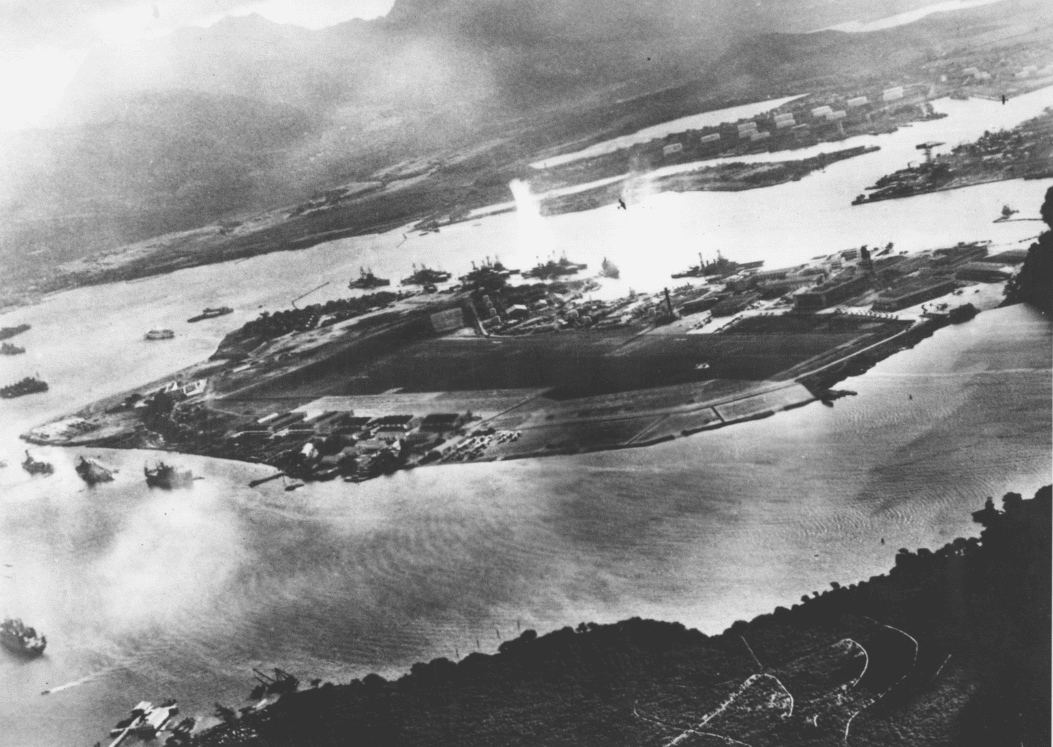 Picryl
Picryl
3. If the Shoe Fits…
One reason why Lindbergh’s reputation was so damaged by his anti-war stance was the fact that he had visited Nazi Germany on several occasions and returned with nothing but praise. He also reacted to the horrifying anti-Semitic event known as Kristallnacht with comments about the “Jewish problem” that Germany was dealing with.
2. Elitist in the Worst Way
It didn’t help that Lindbergh didn’t just look down on Jewish people, but also other races. Lindbergh was accused of being a Nazi thanks to an article in Reader’s Digest in 1939, where Lindbergh warned that preserving one’s European heritage was the only way to “have peace and security.” Not only that, Lindberg’s staunch belief in eugenics had once been socially acceptable, but with the entry of the US into the Second World War, Lindbergh’s philosophies sounded too similar to those of America’s enemies.
1. A Surprising Enemy
As you can imagine, Lindbergh earned a lot of enemies and critics during the Second World War for his racism and anti-Semitism. One of the best examples of such was a political cartoonist who worked for PM, a New York magazine. Lindbergh was often lampooned in the cartoons for being an alleged Nazi sympathizer. Now, you might be wondering who this cartoonist was; well, his name was Theodor Seuss Geisel. You might recognize him as Dr. Seuss, the writer of half the books you read as a little kid!


